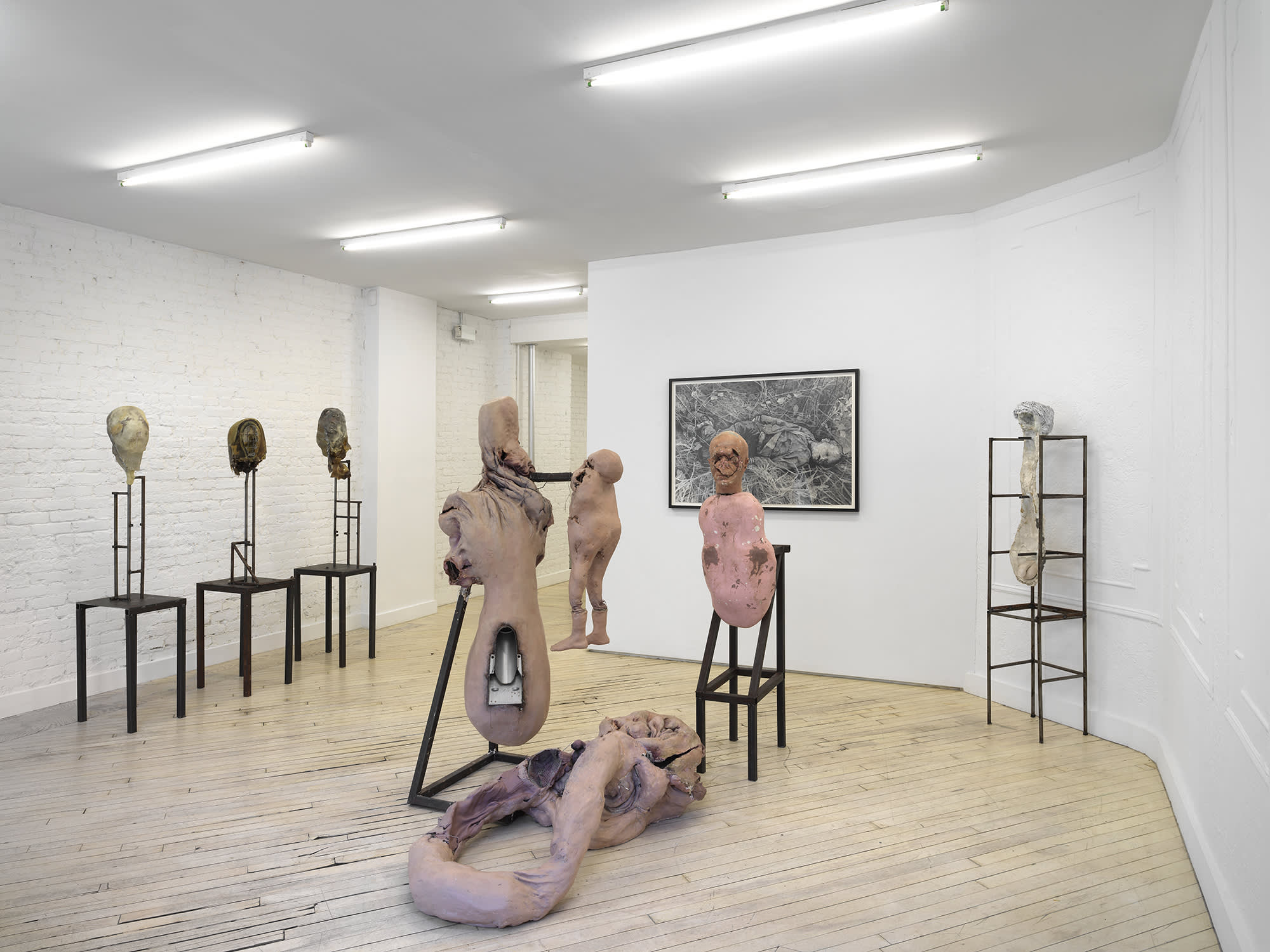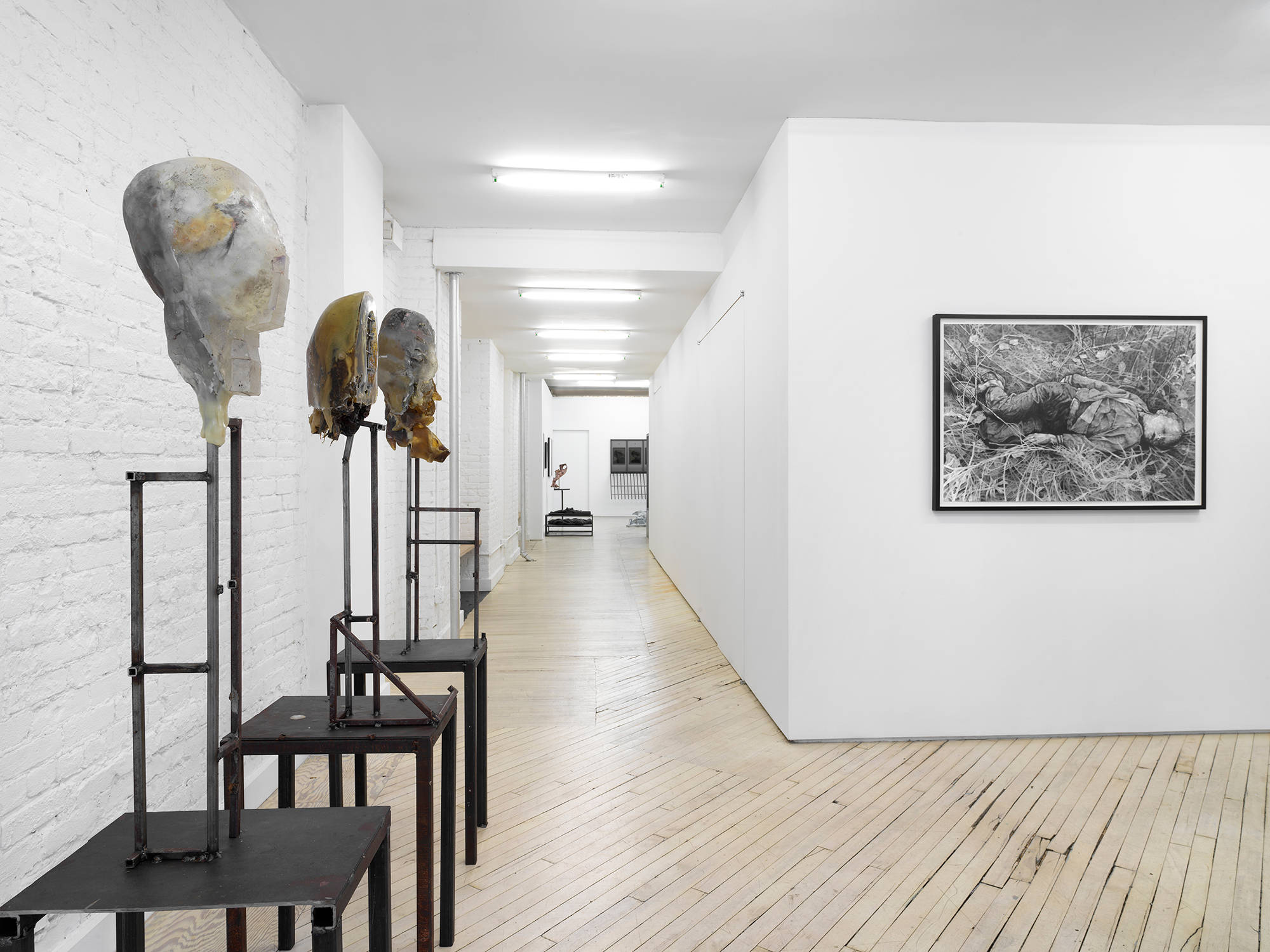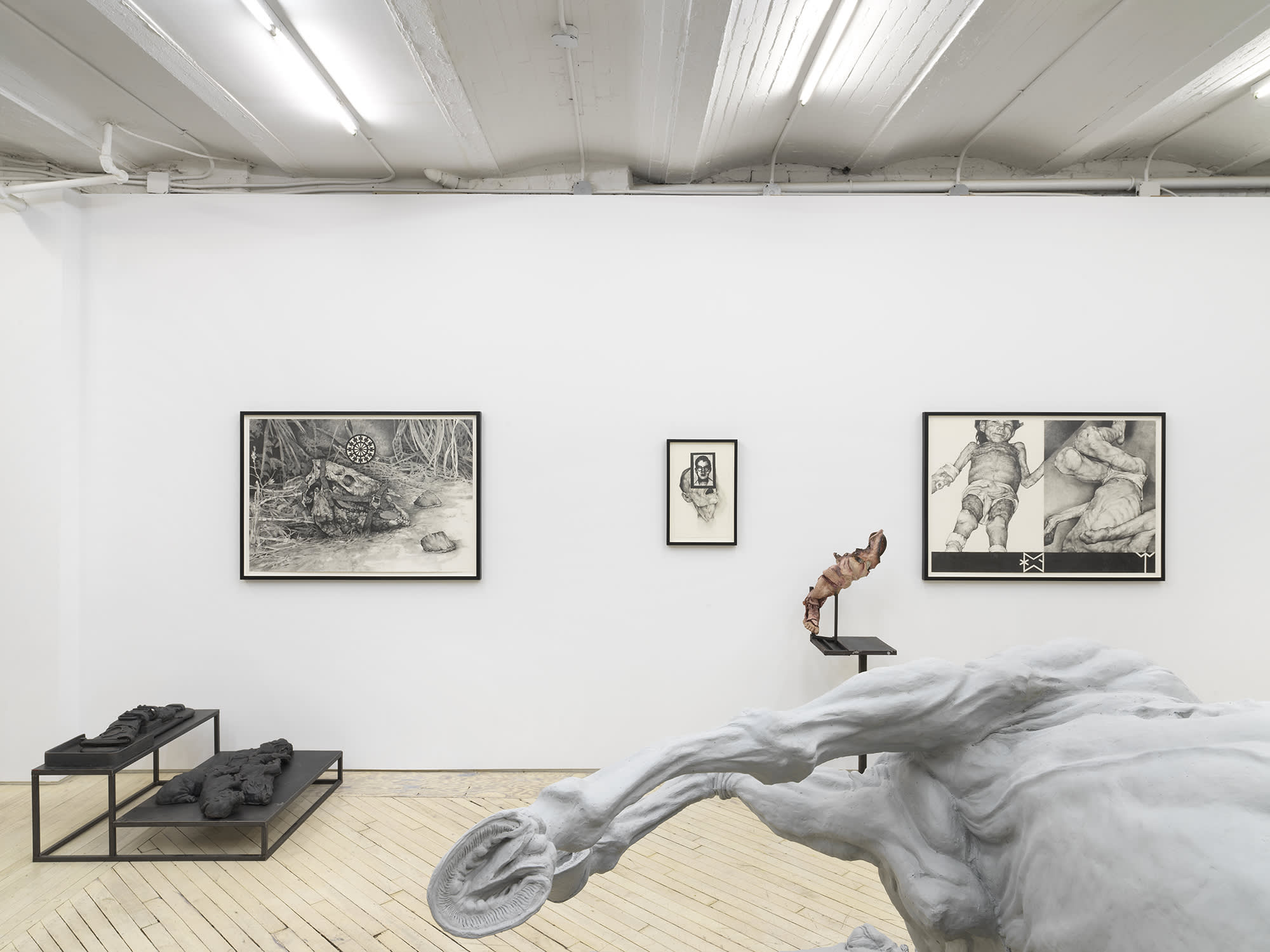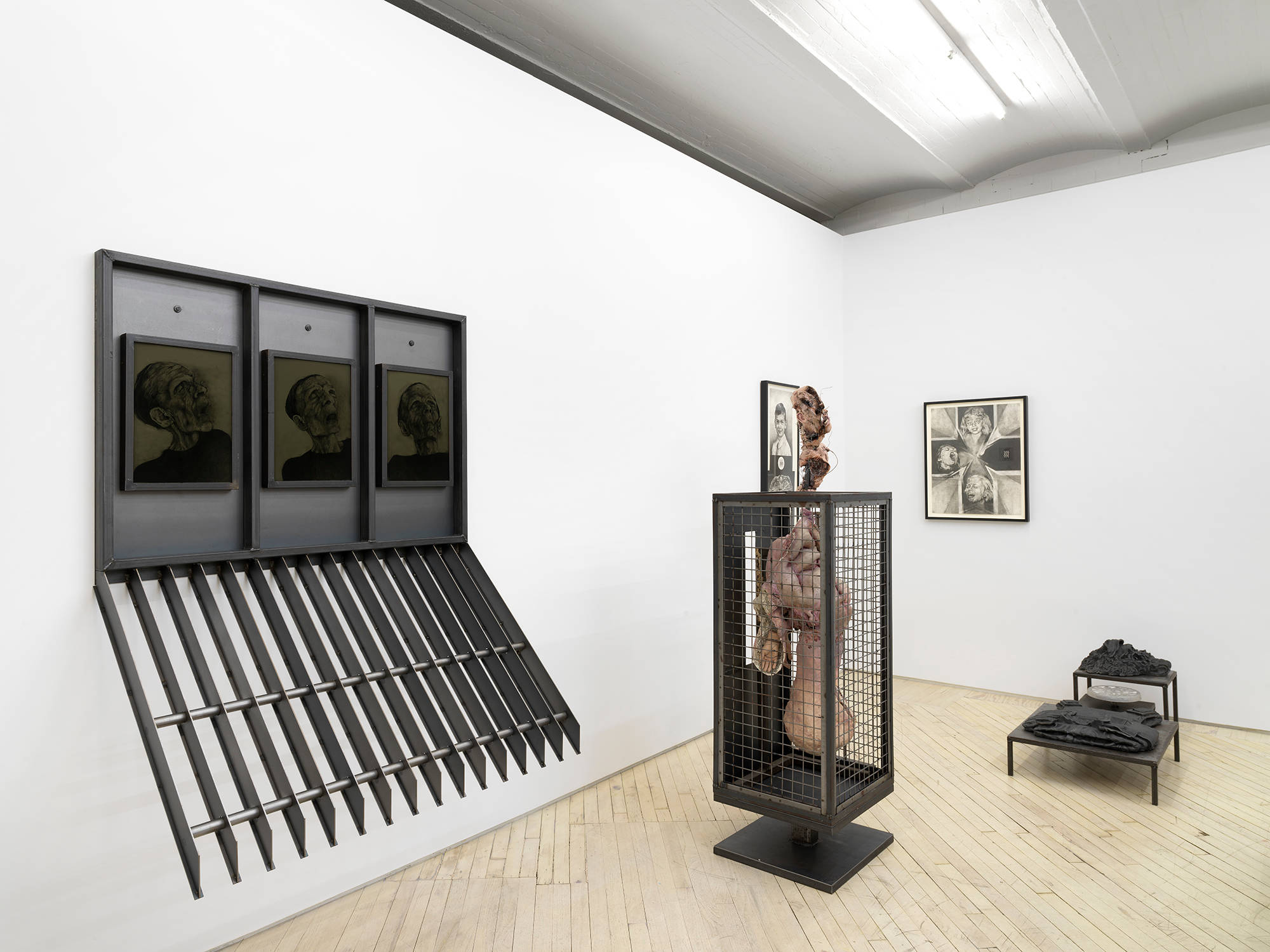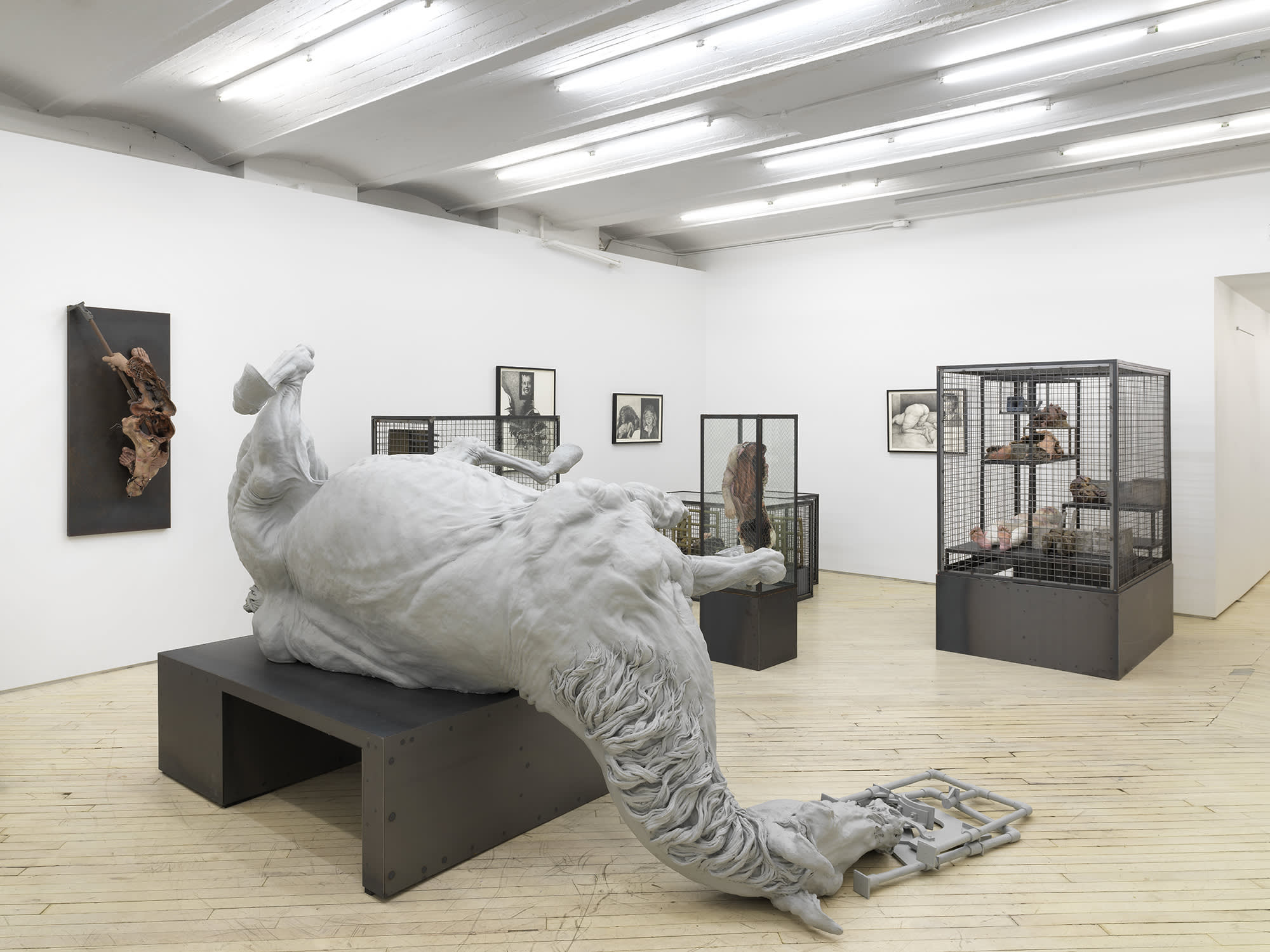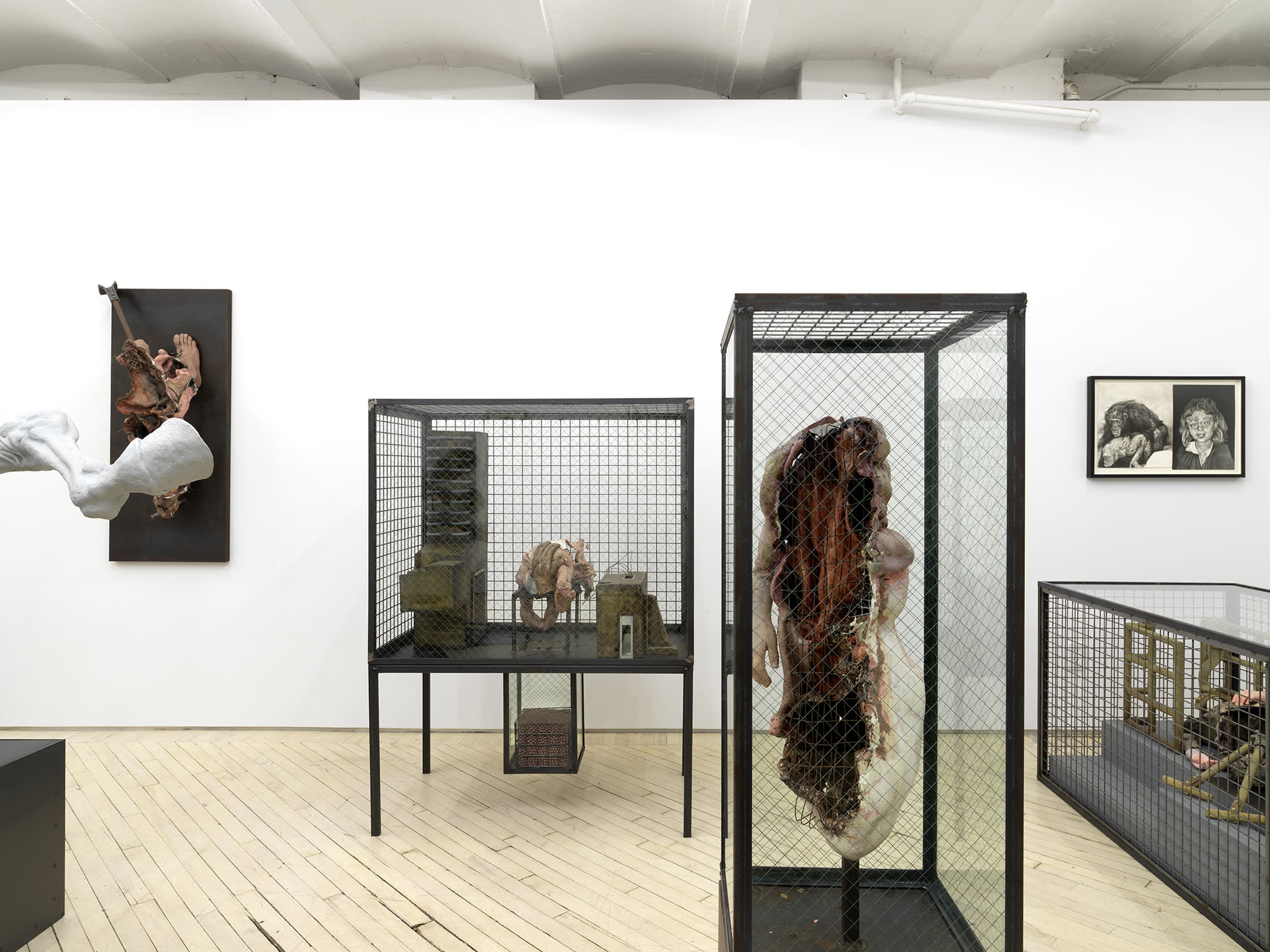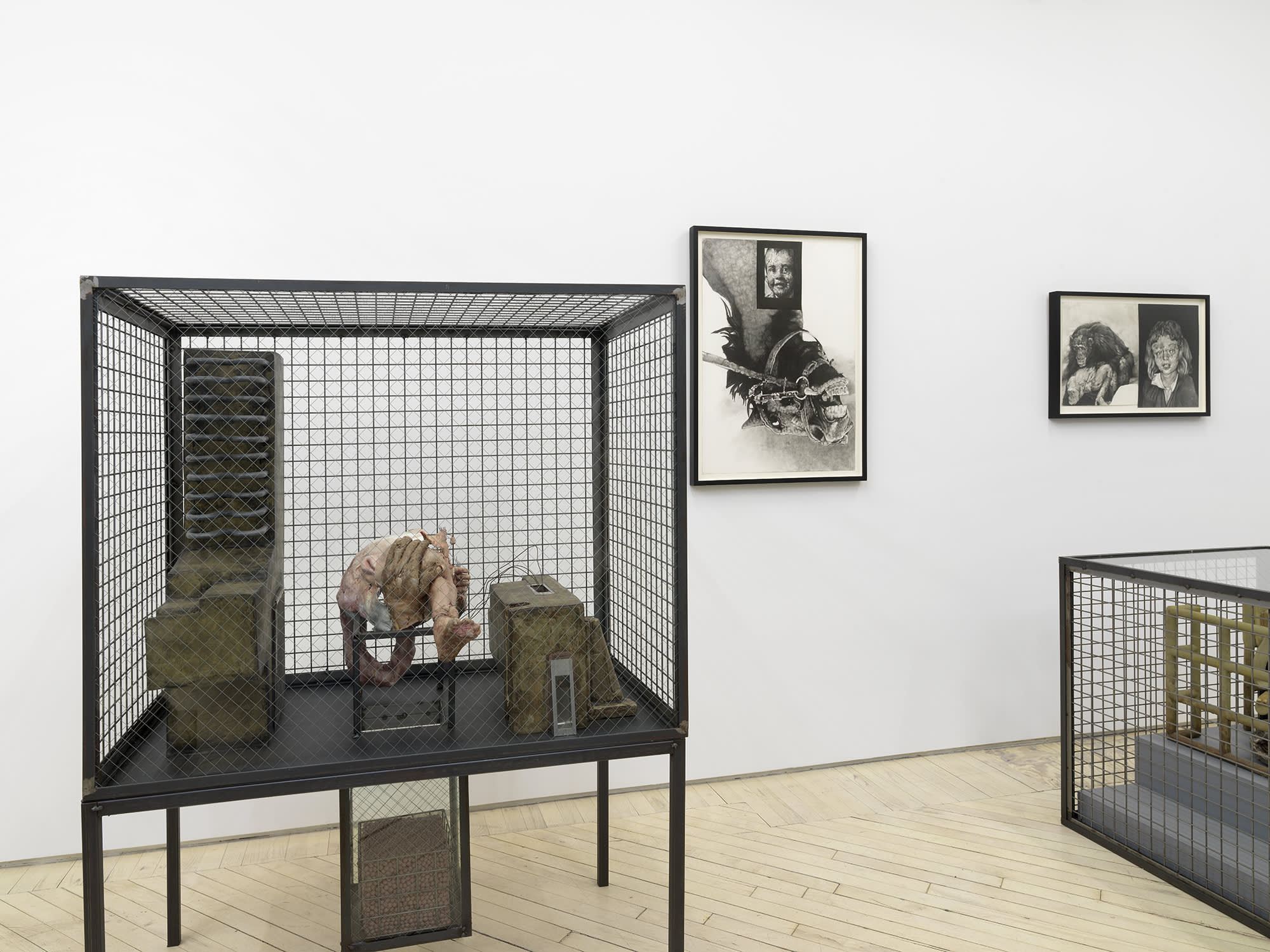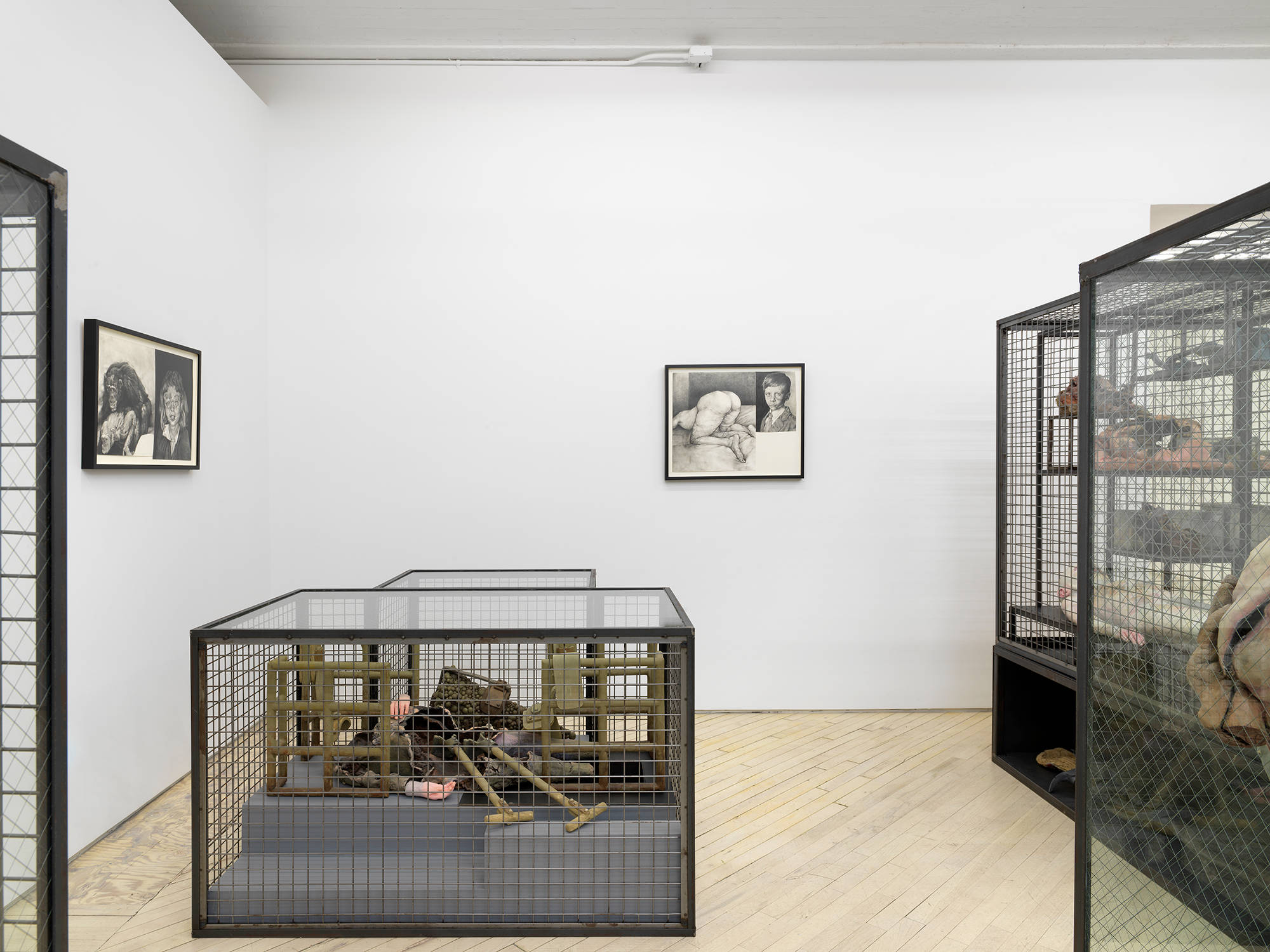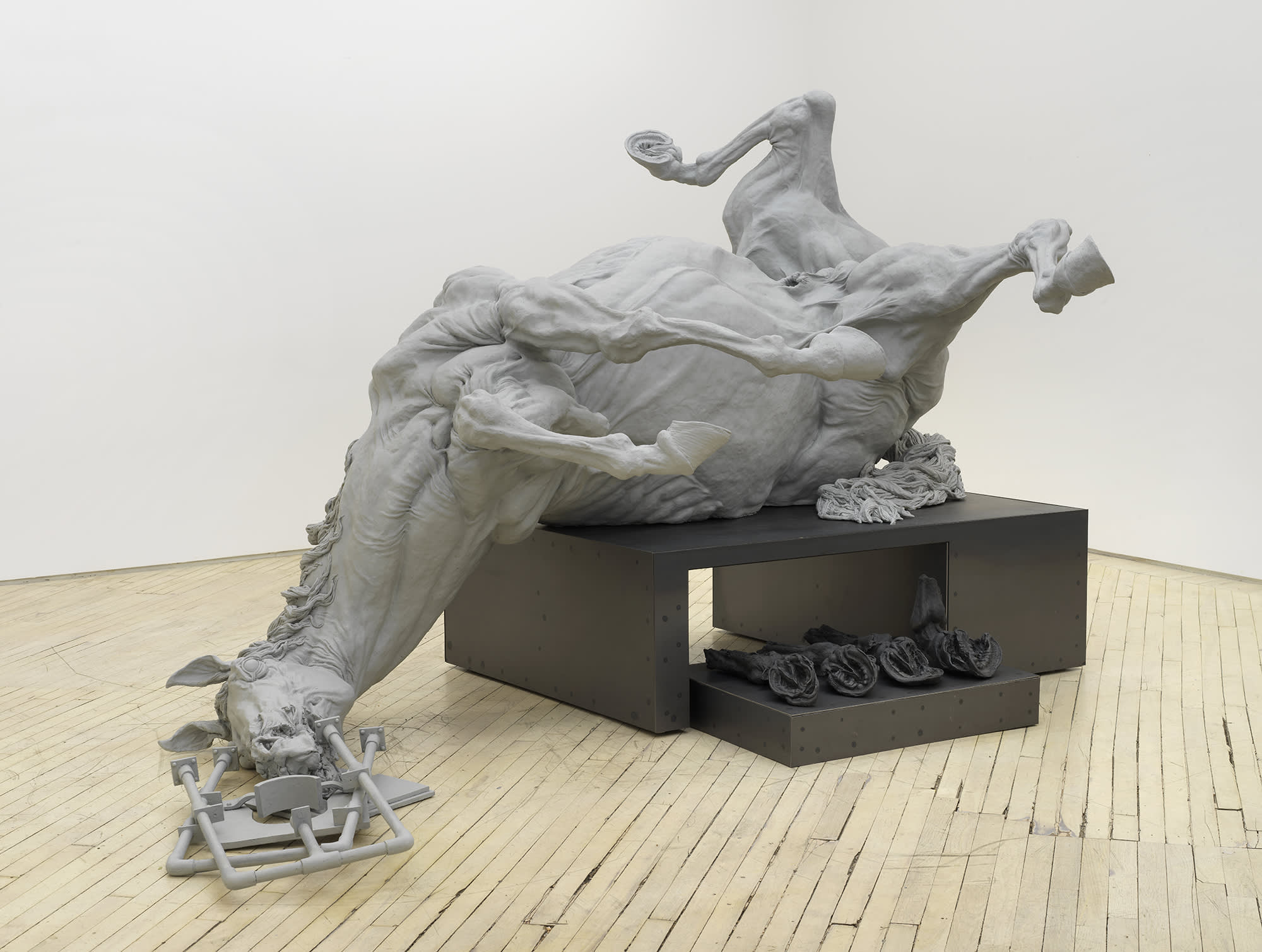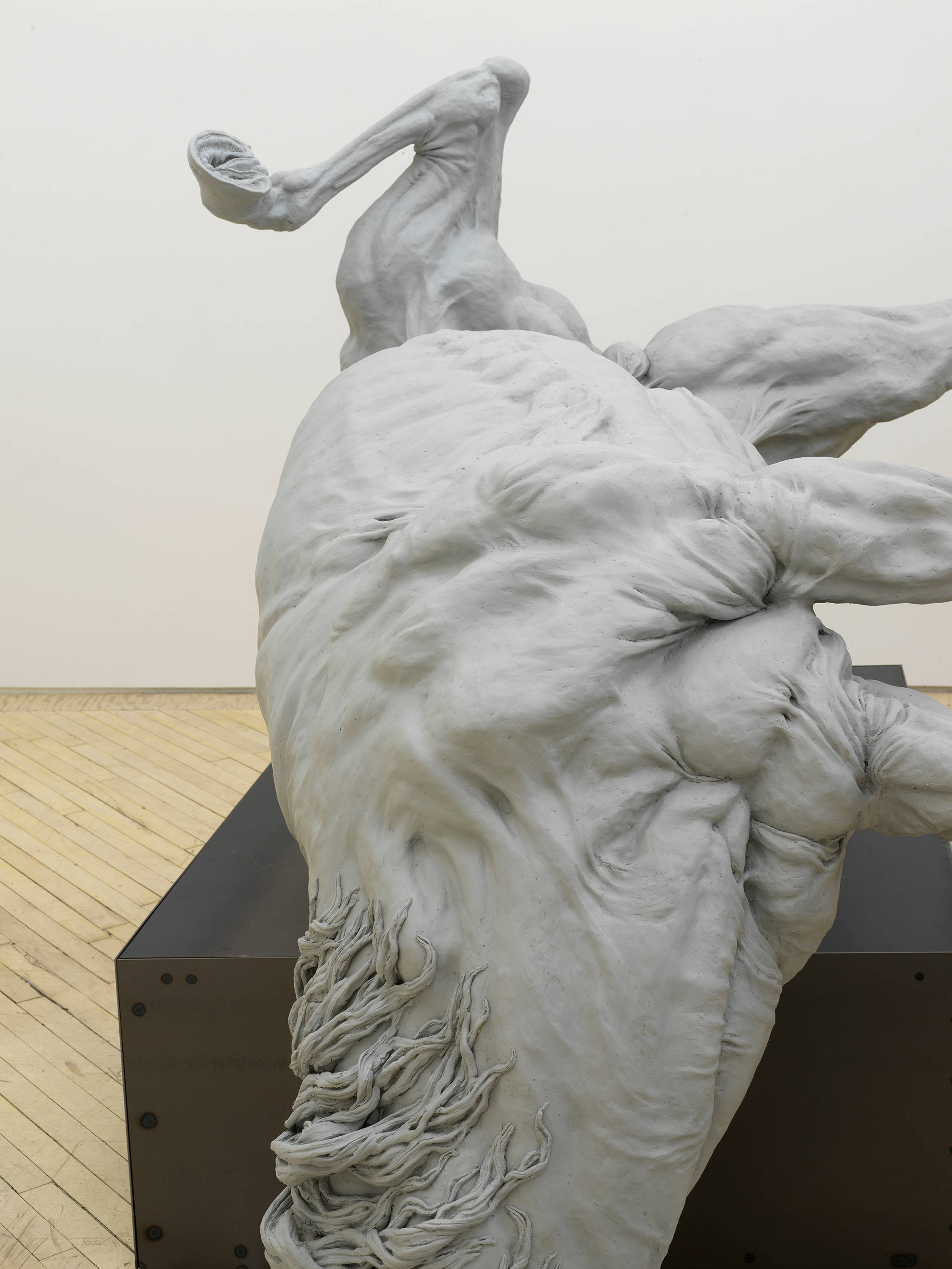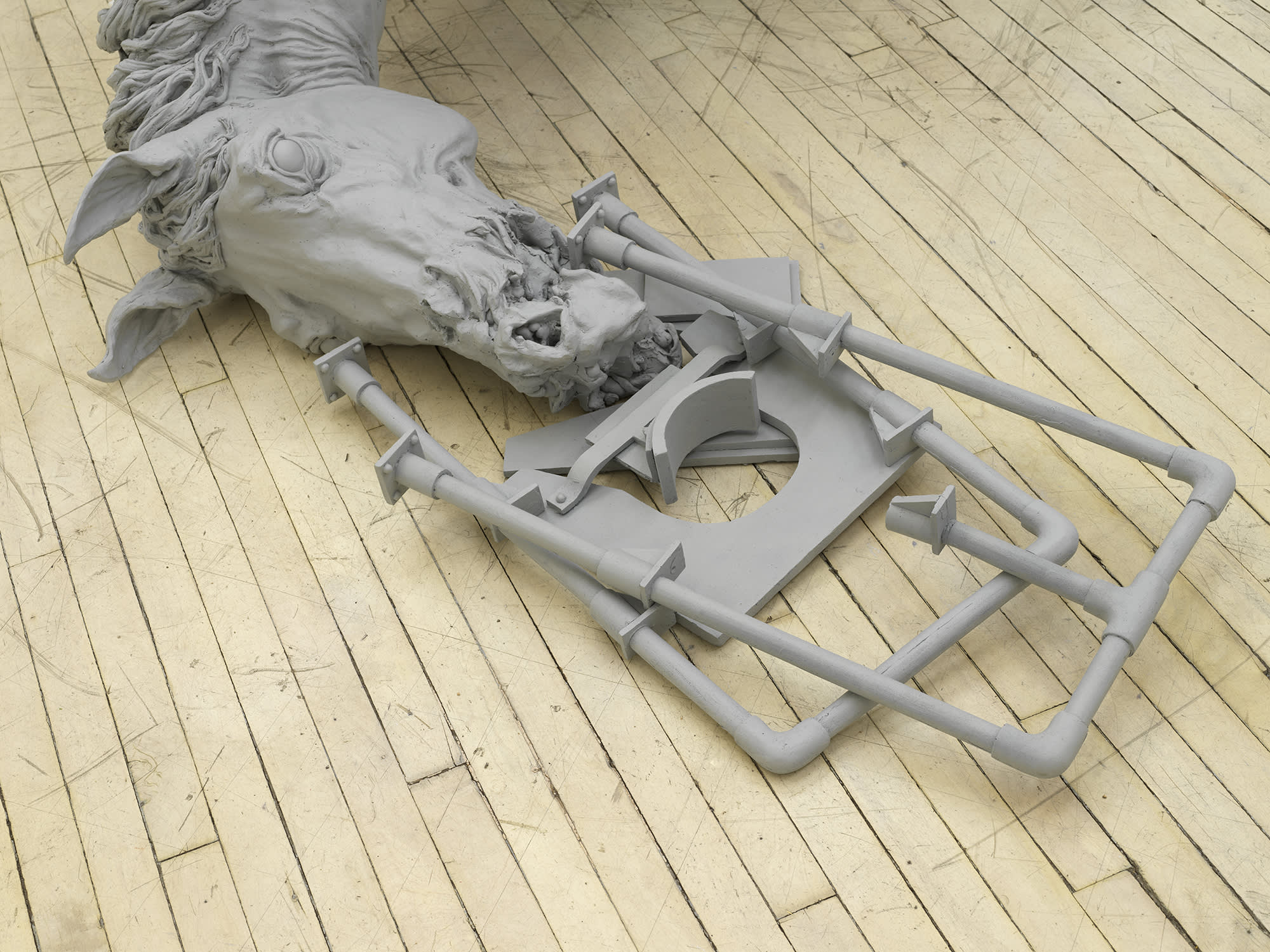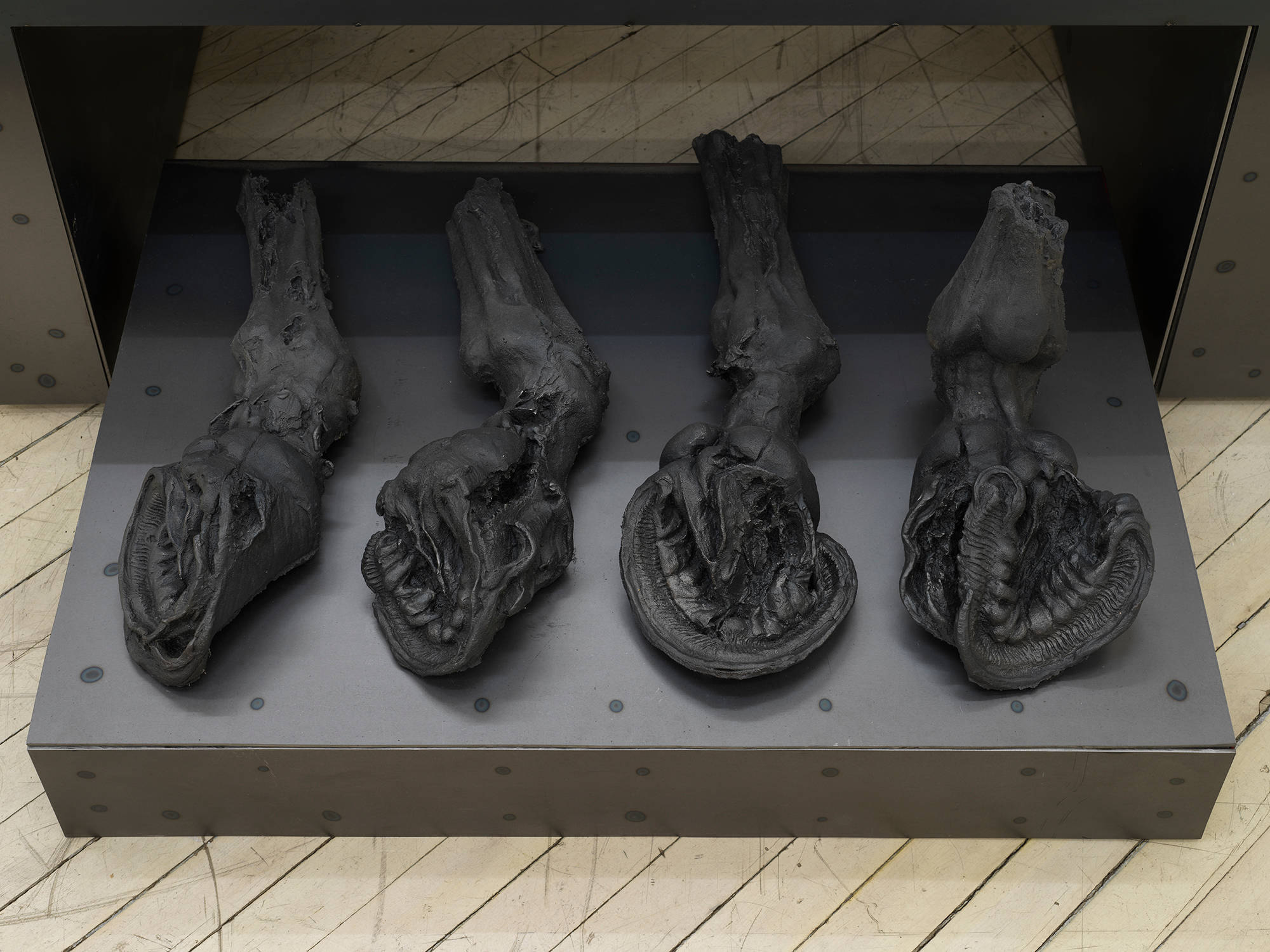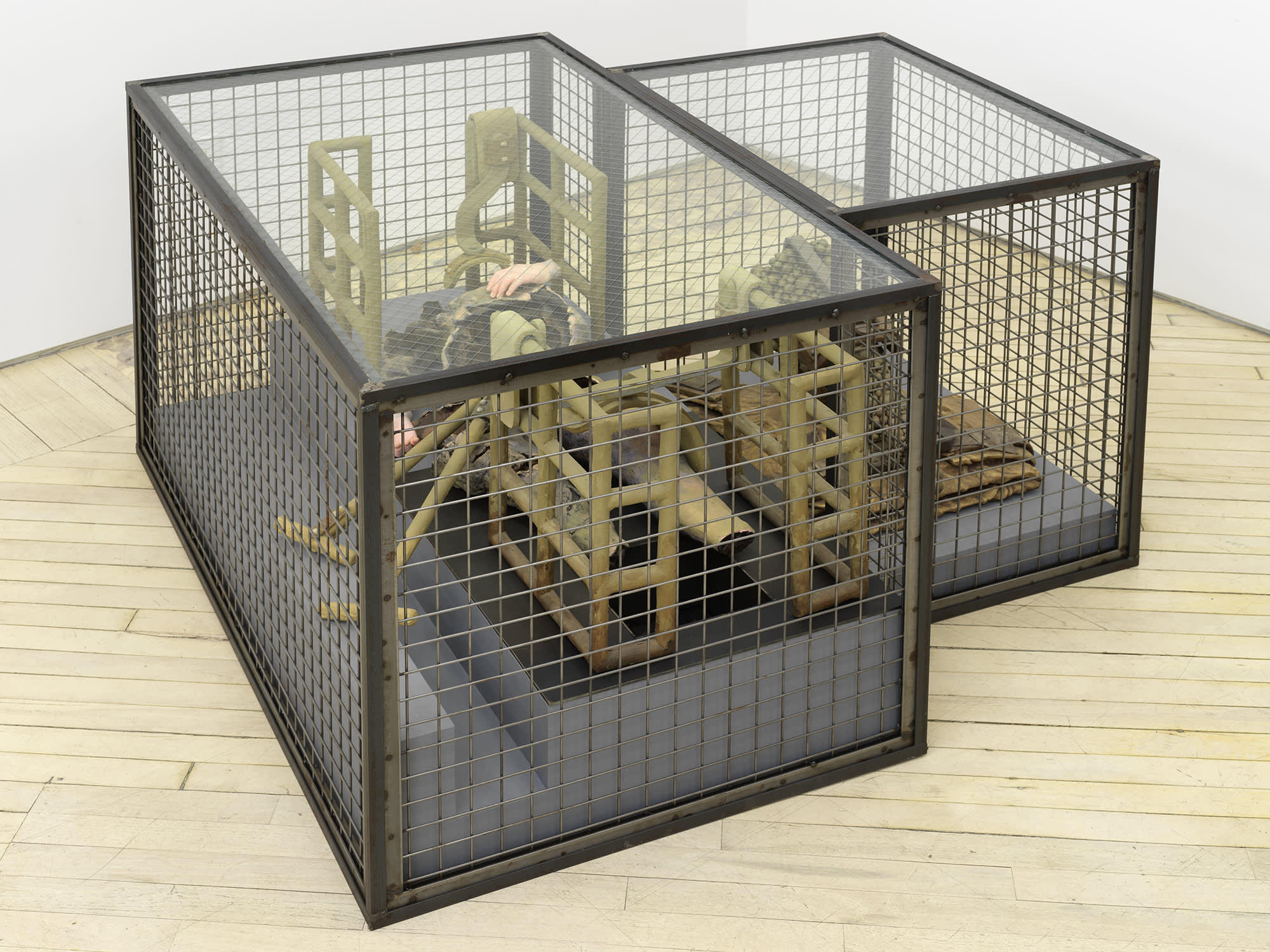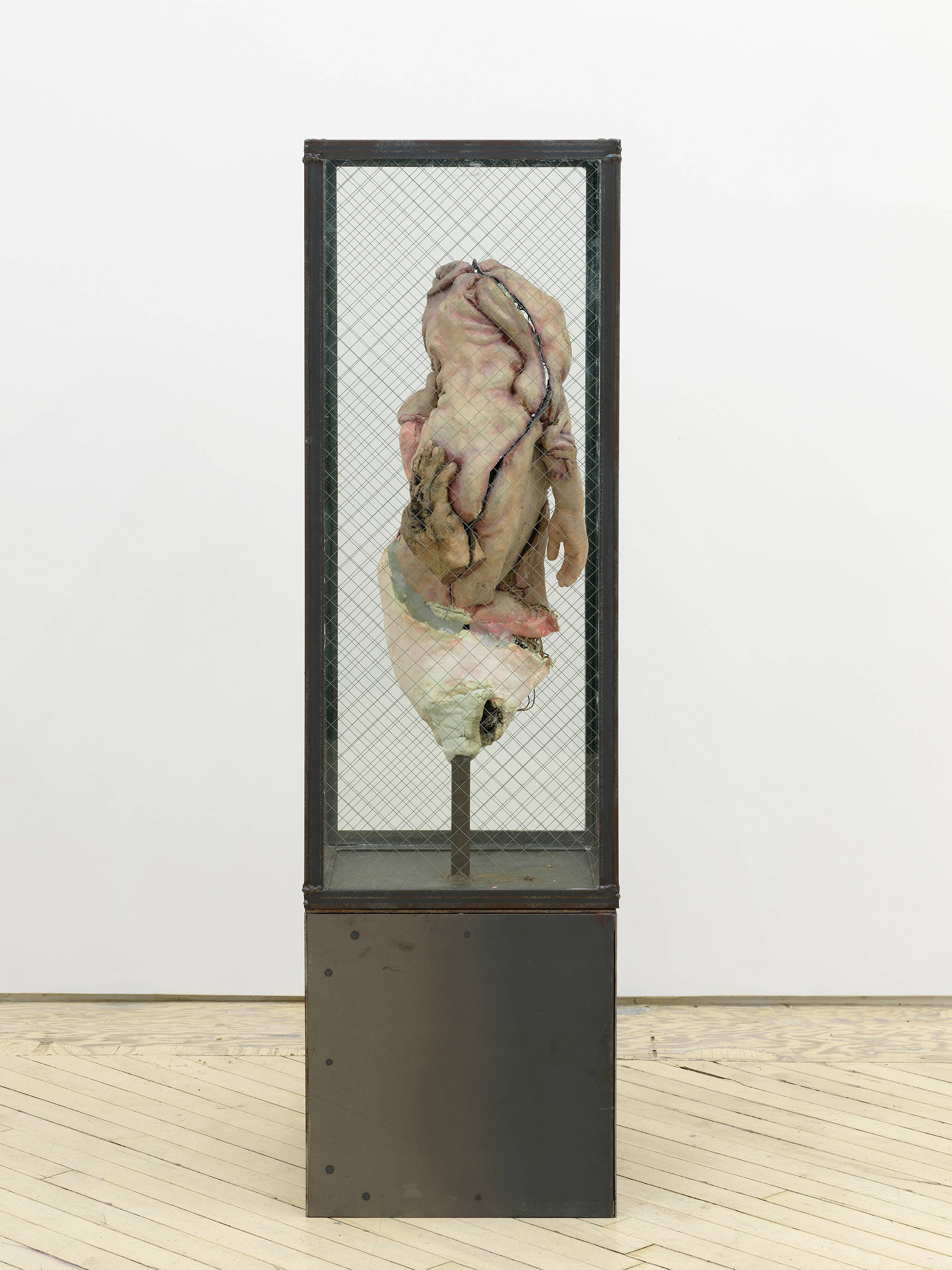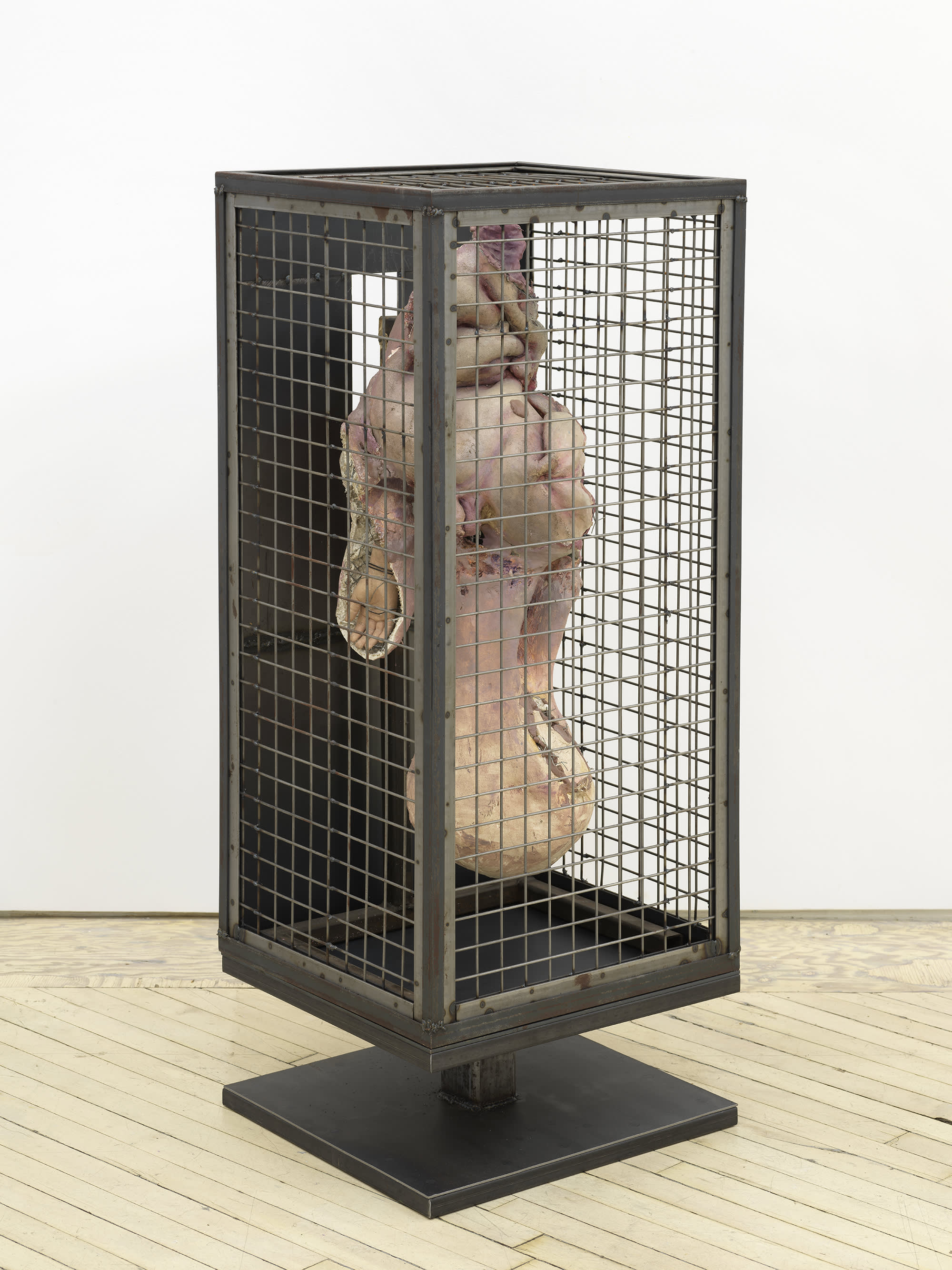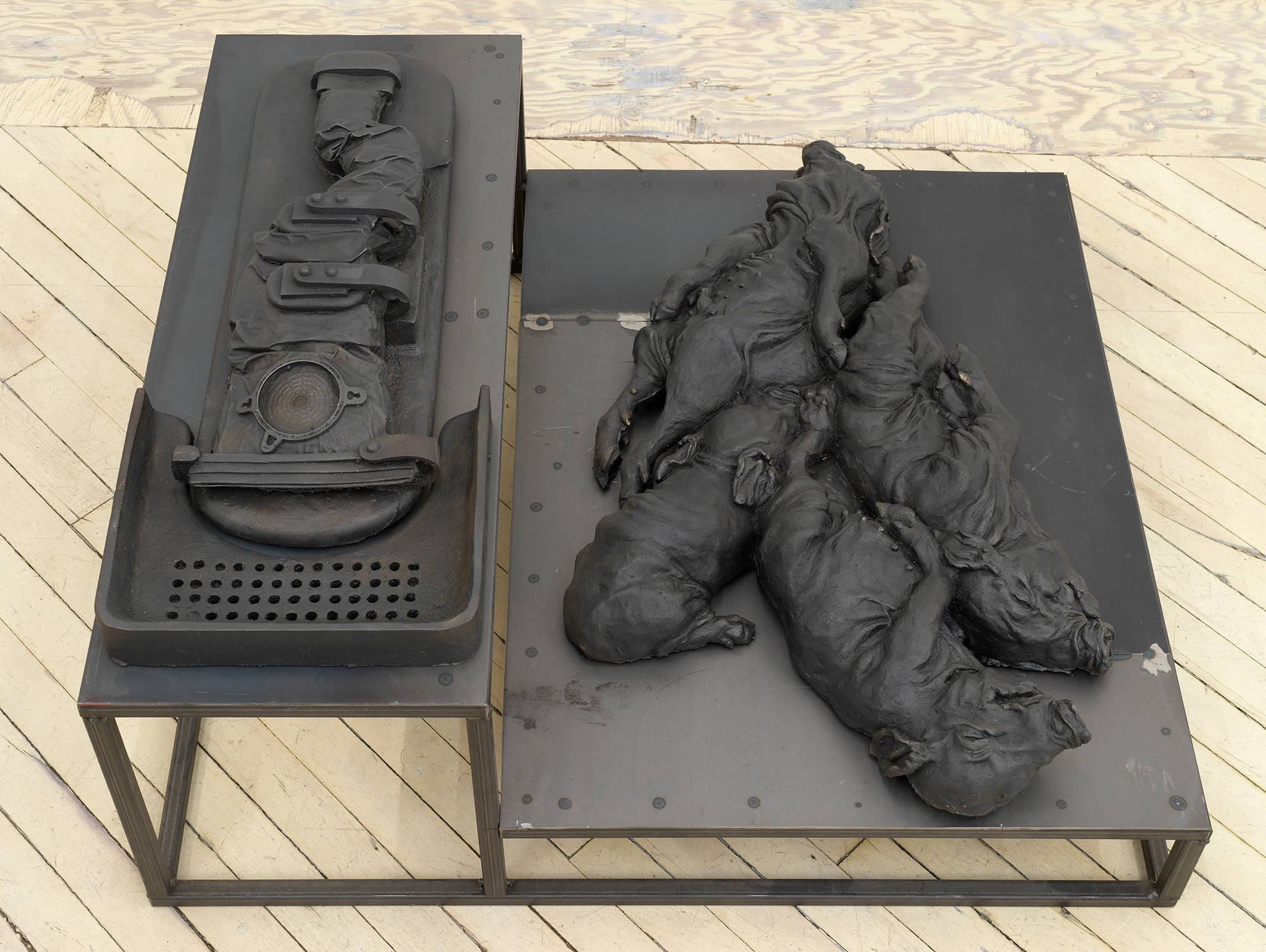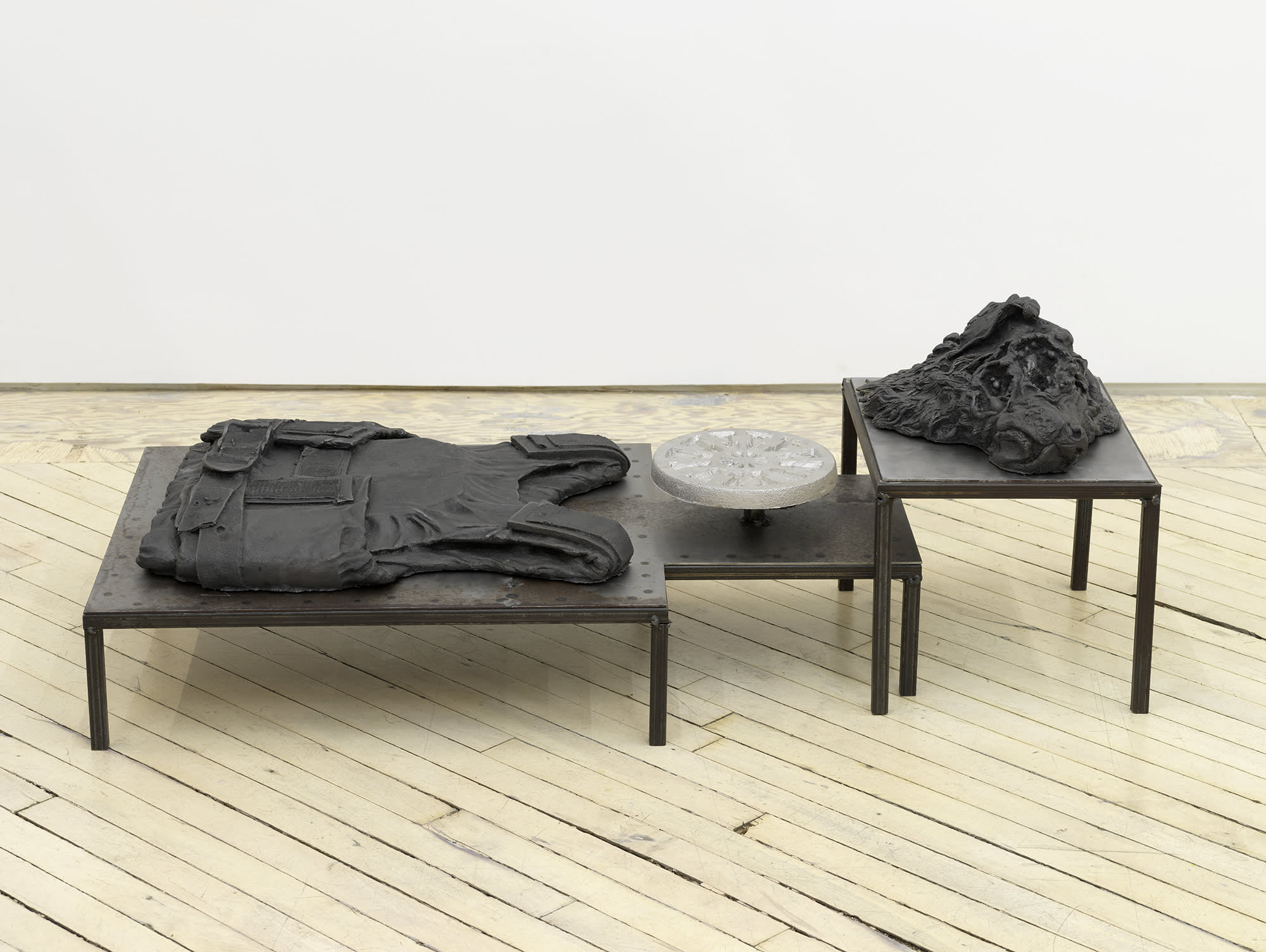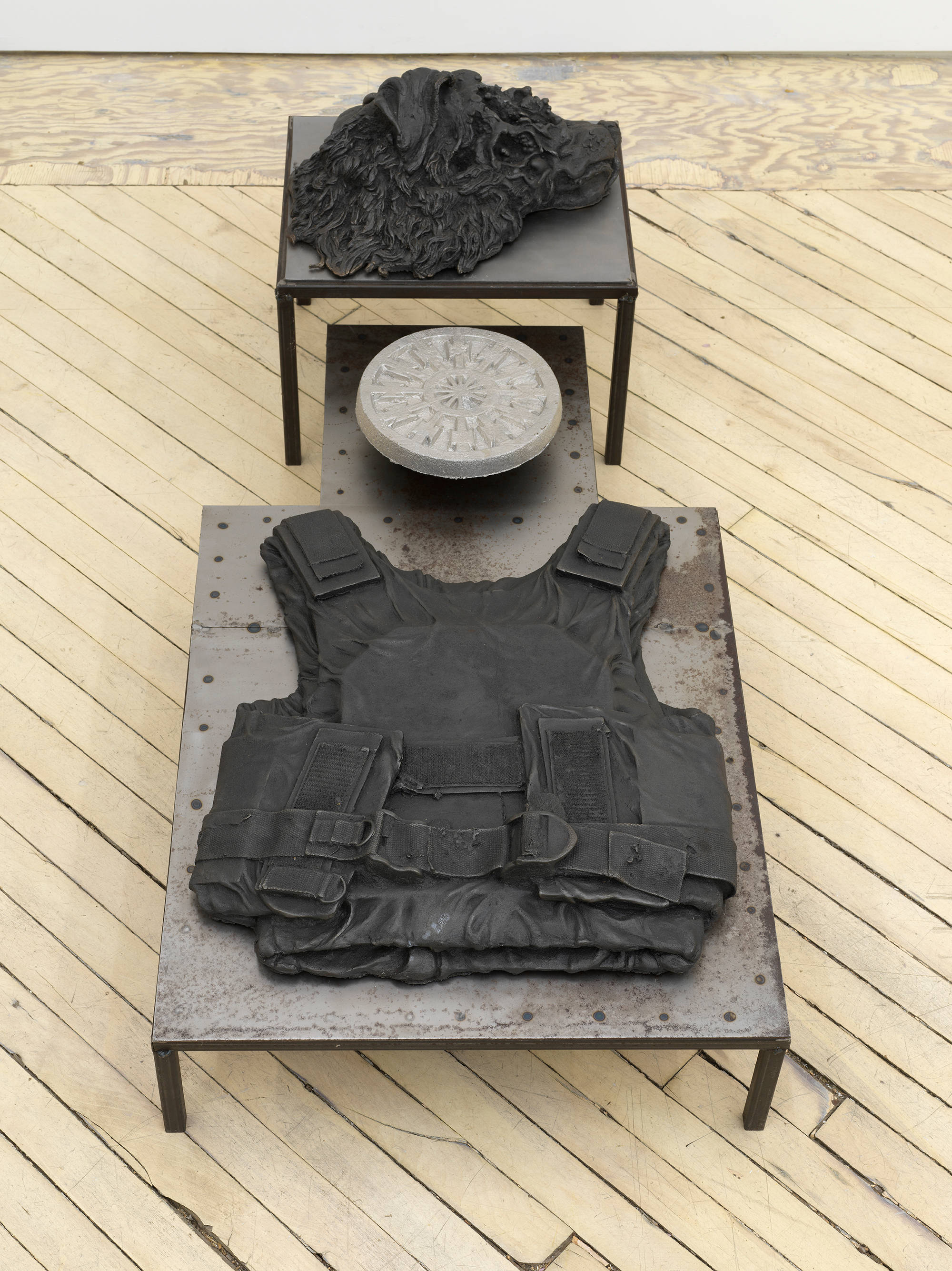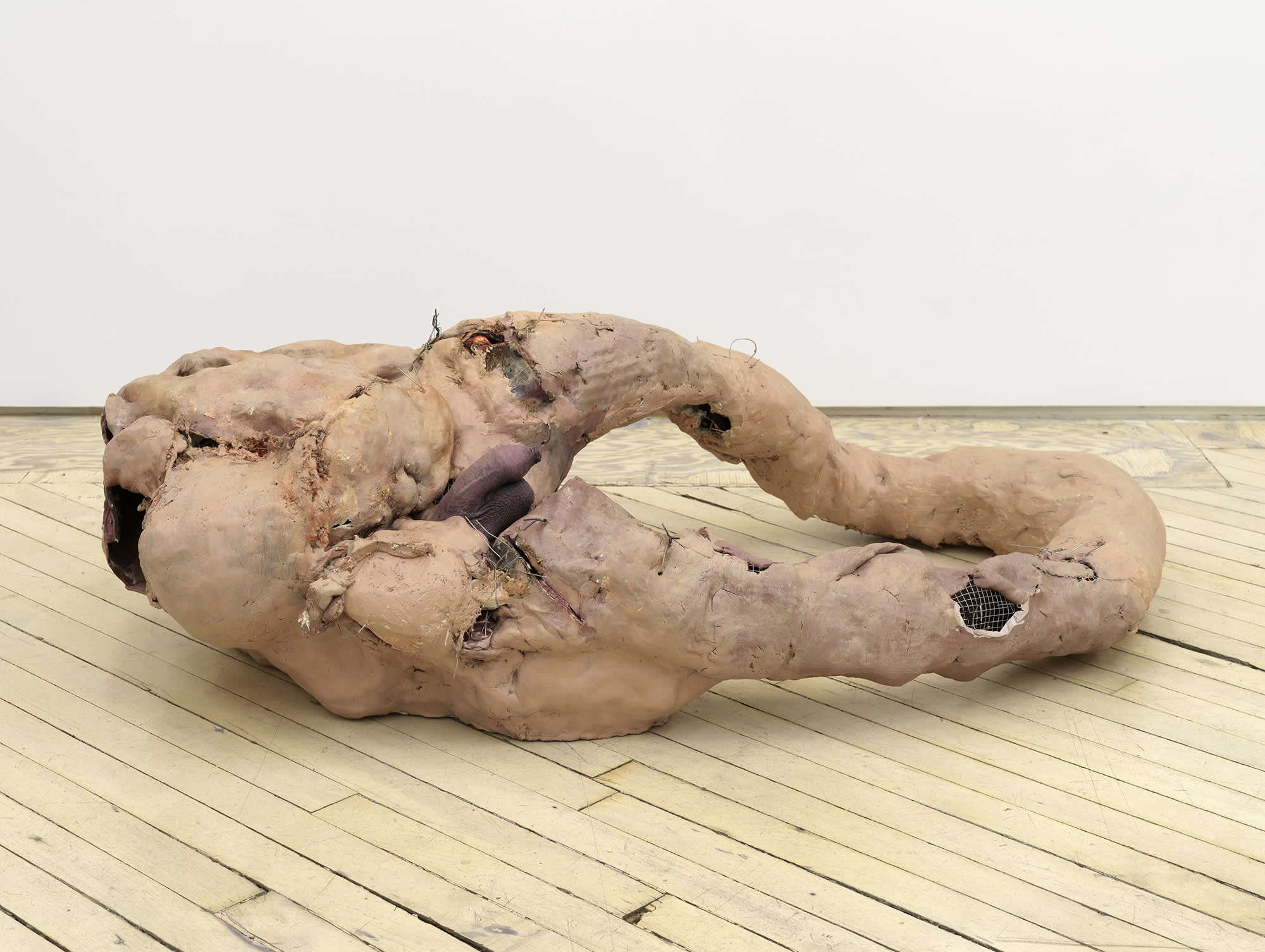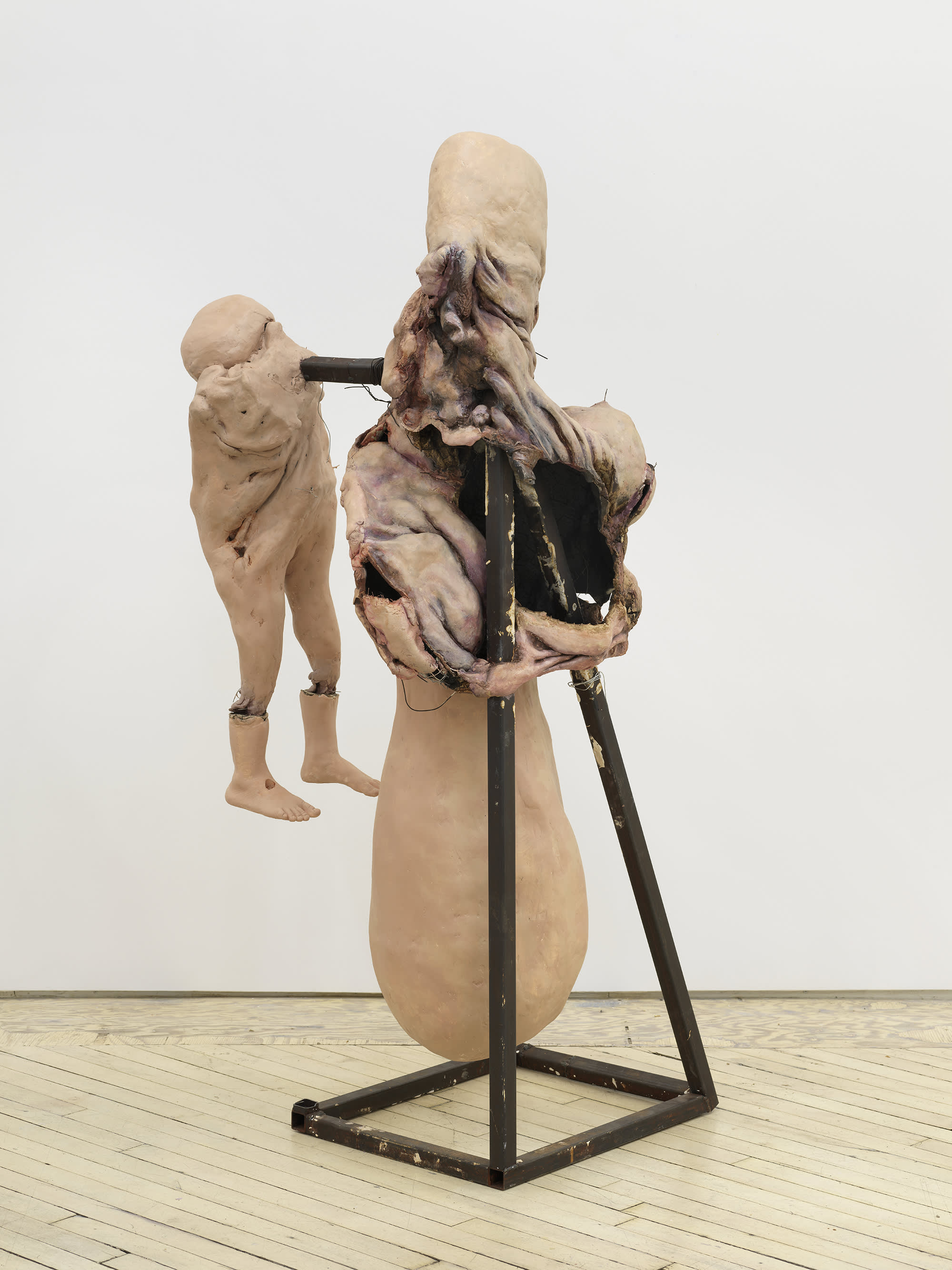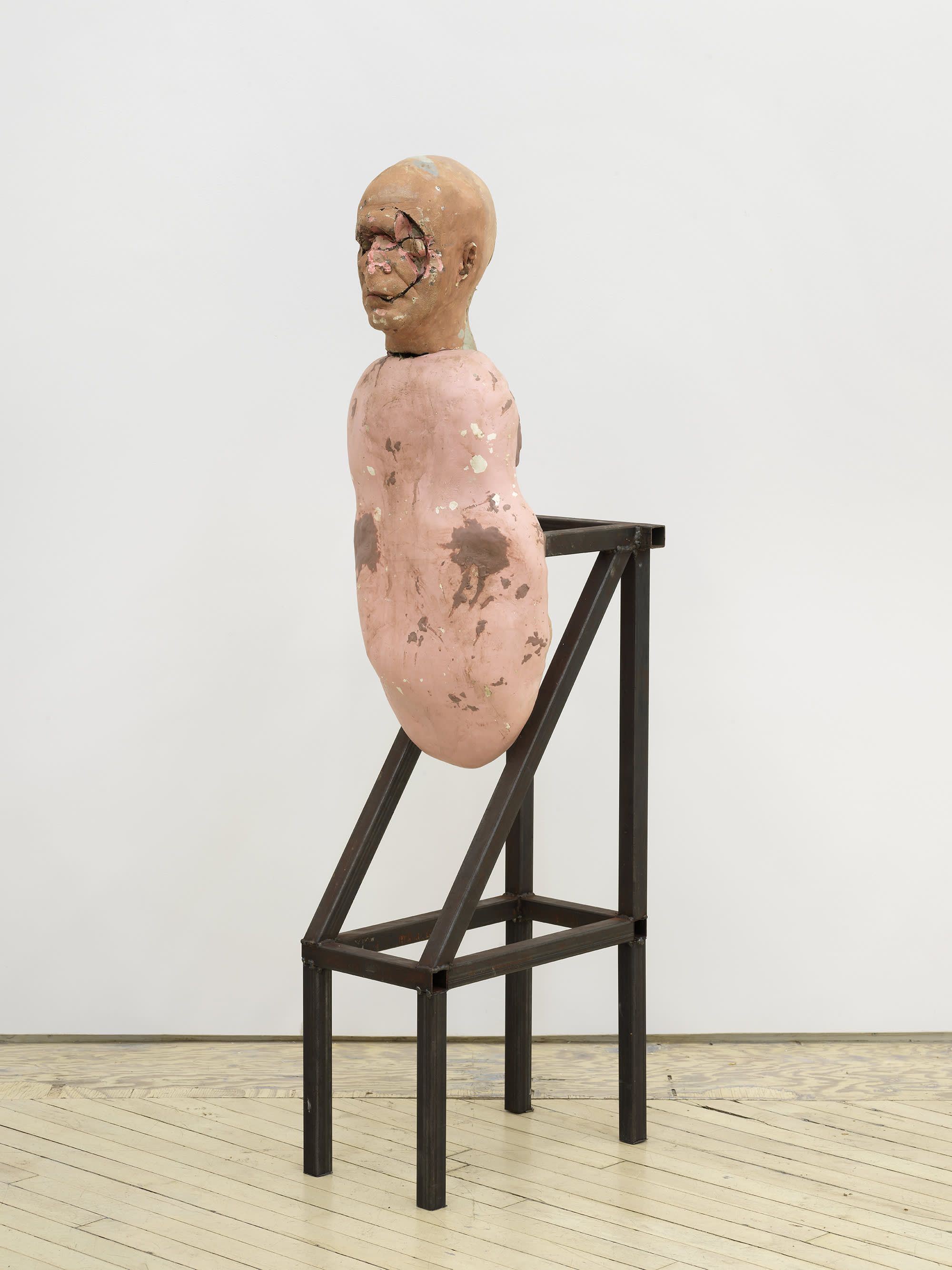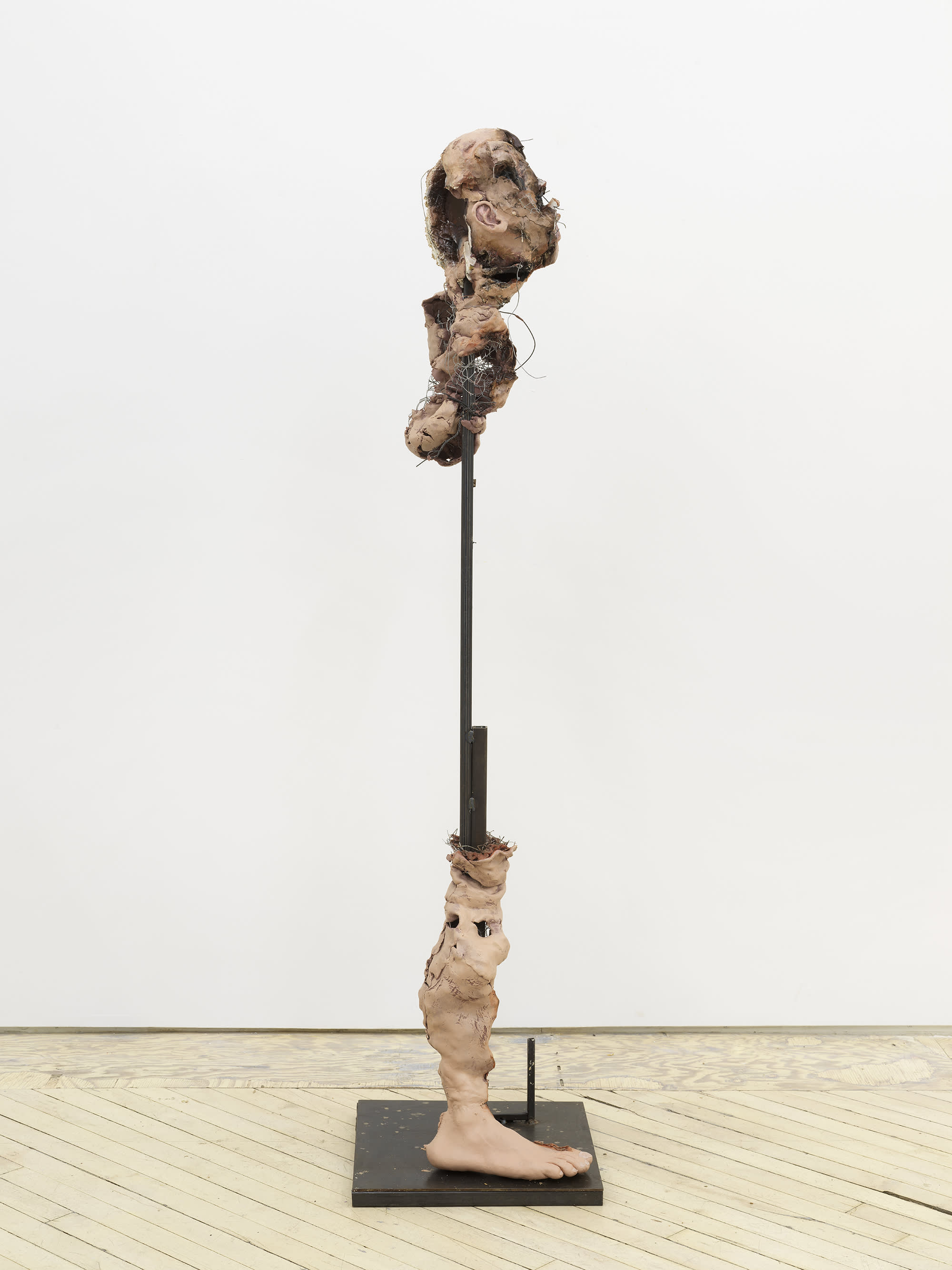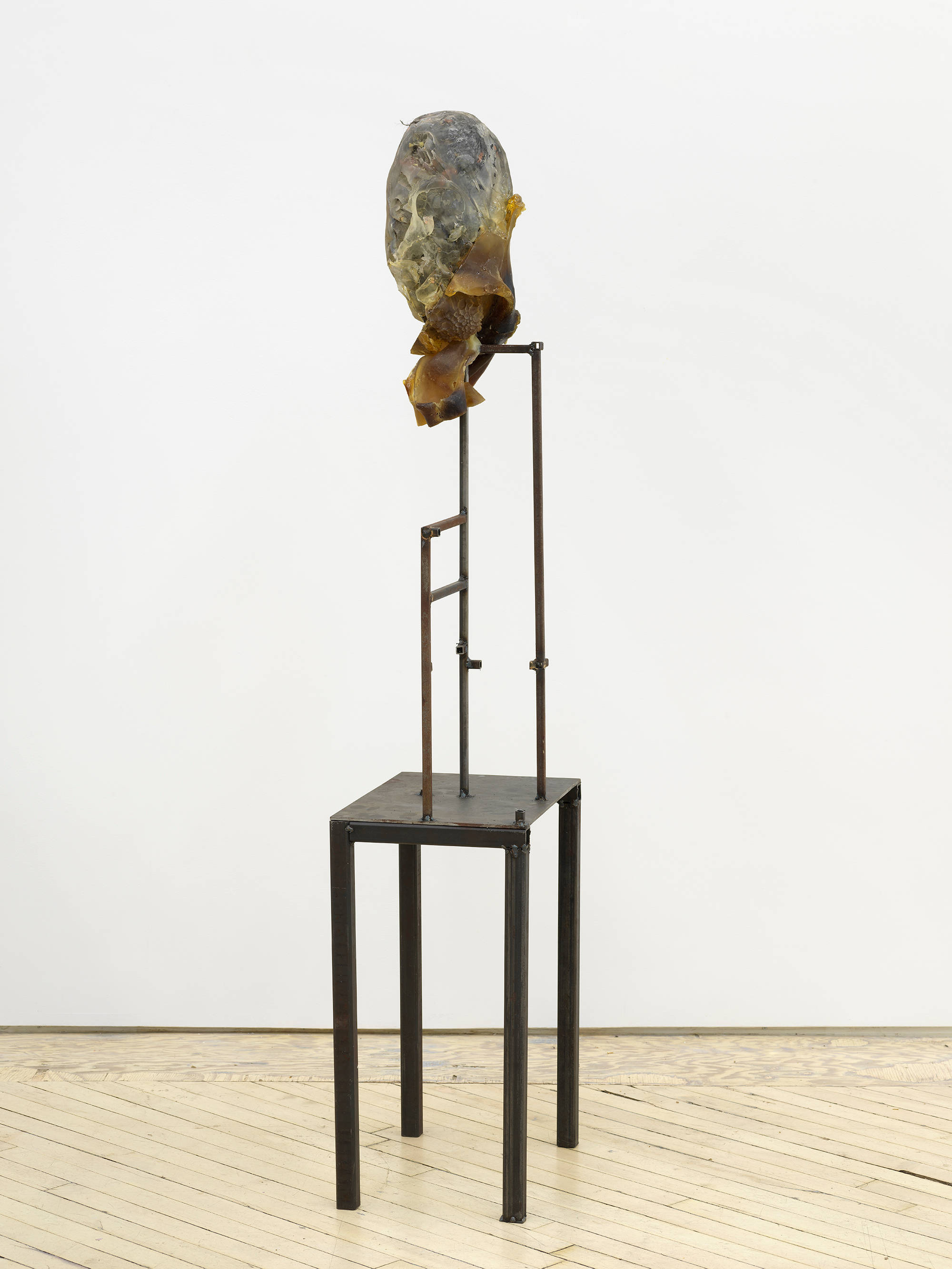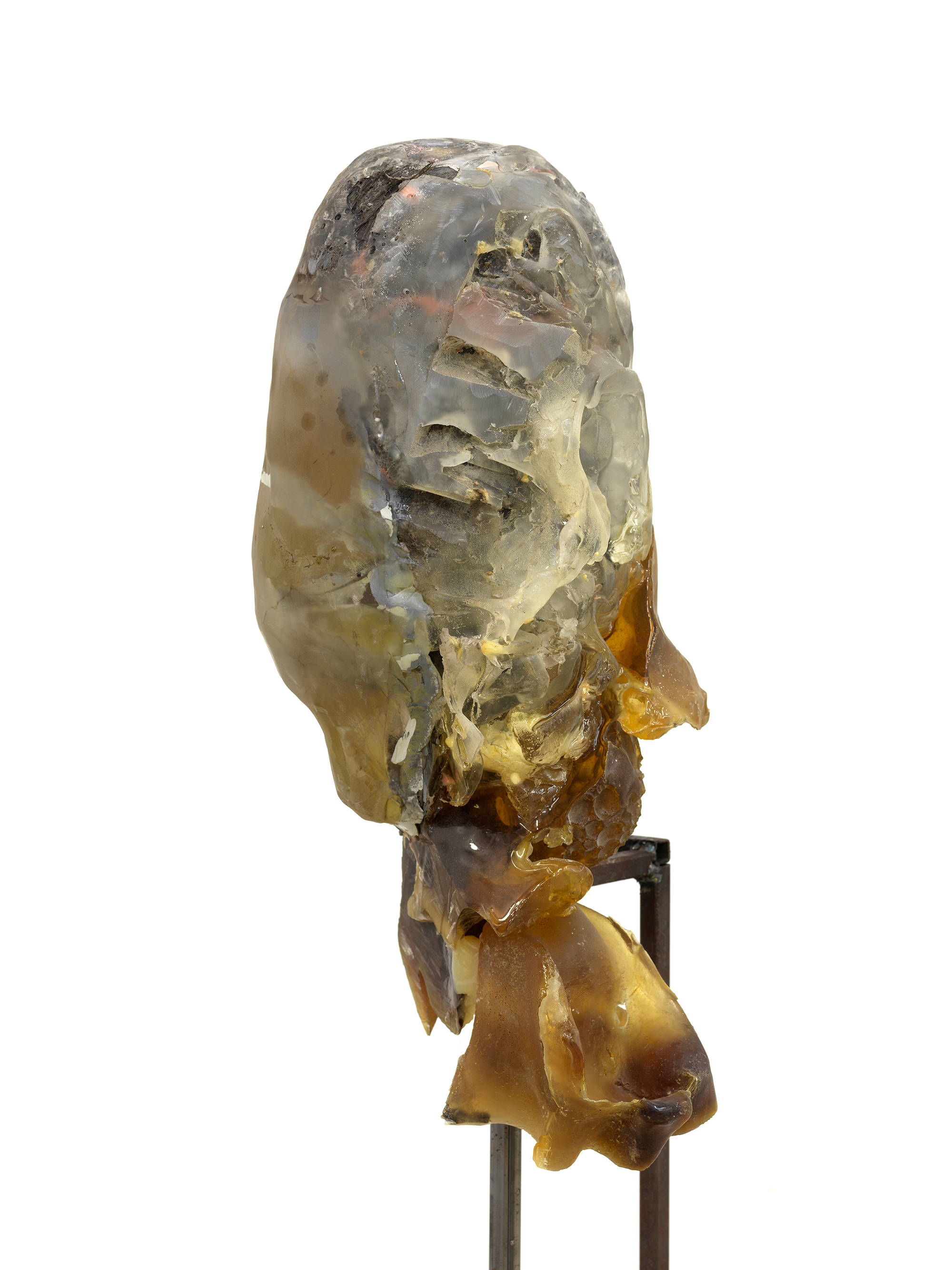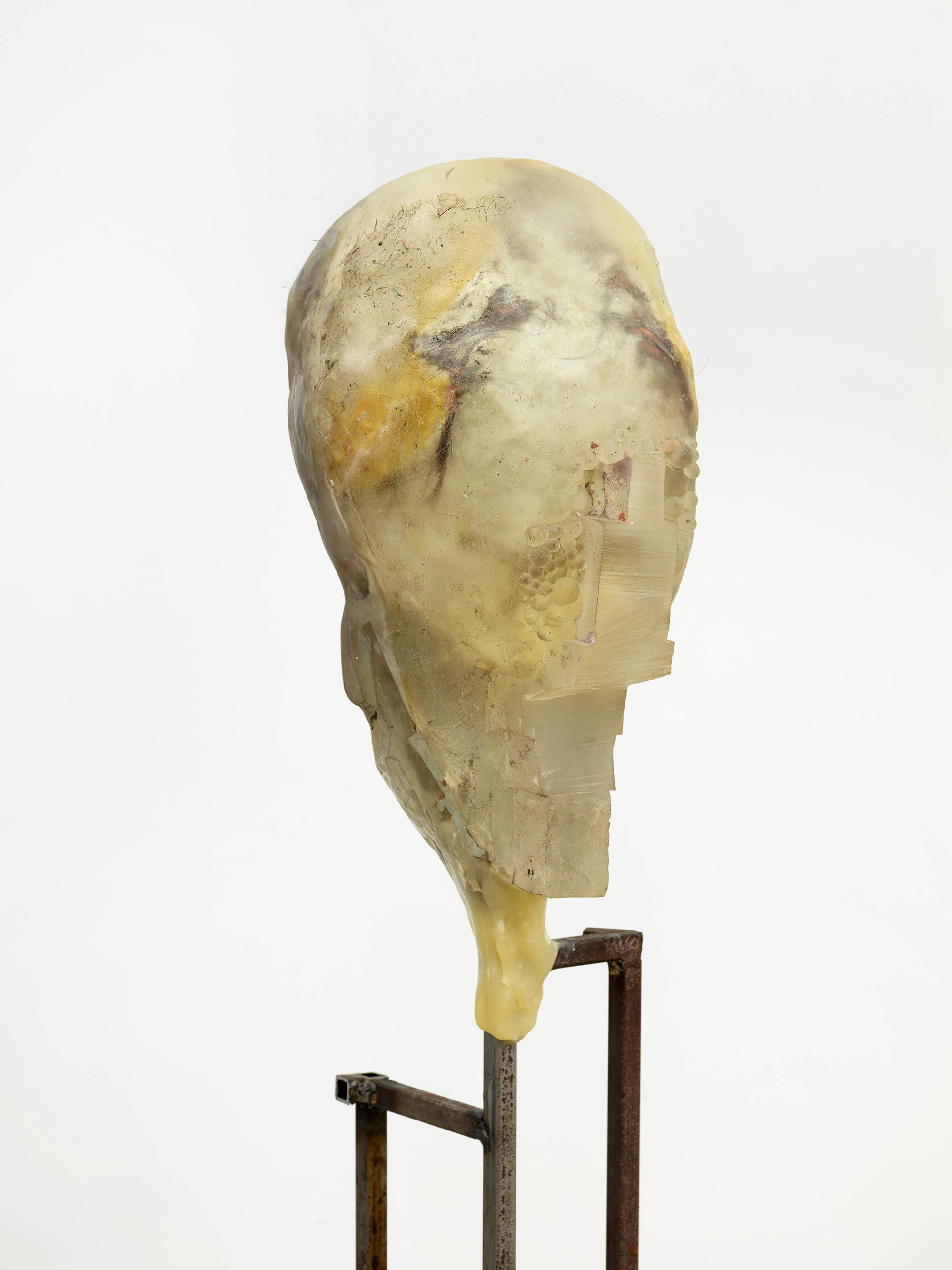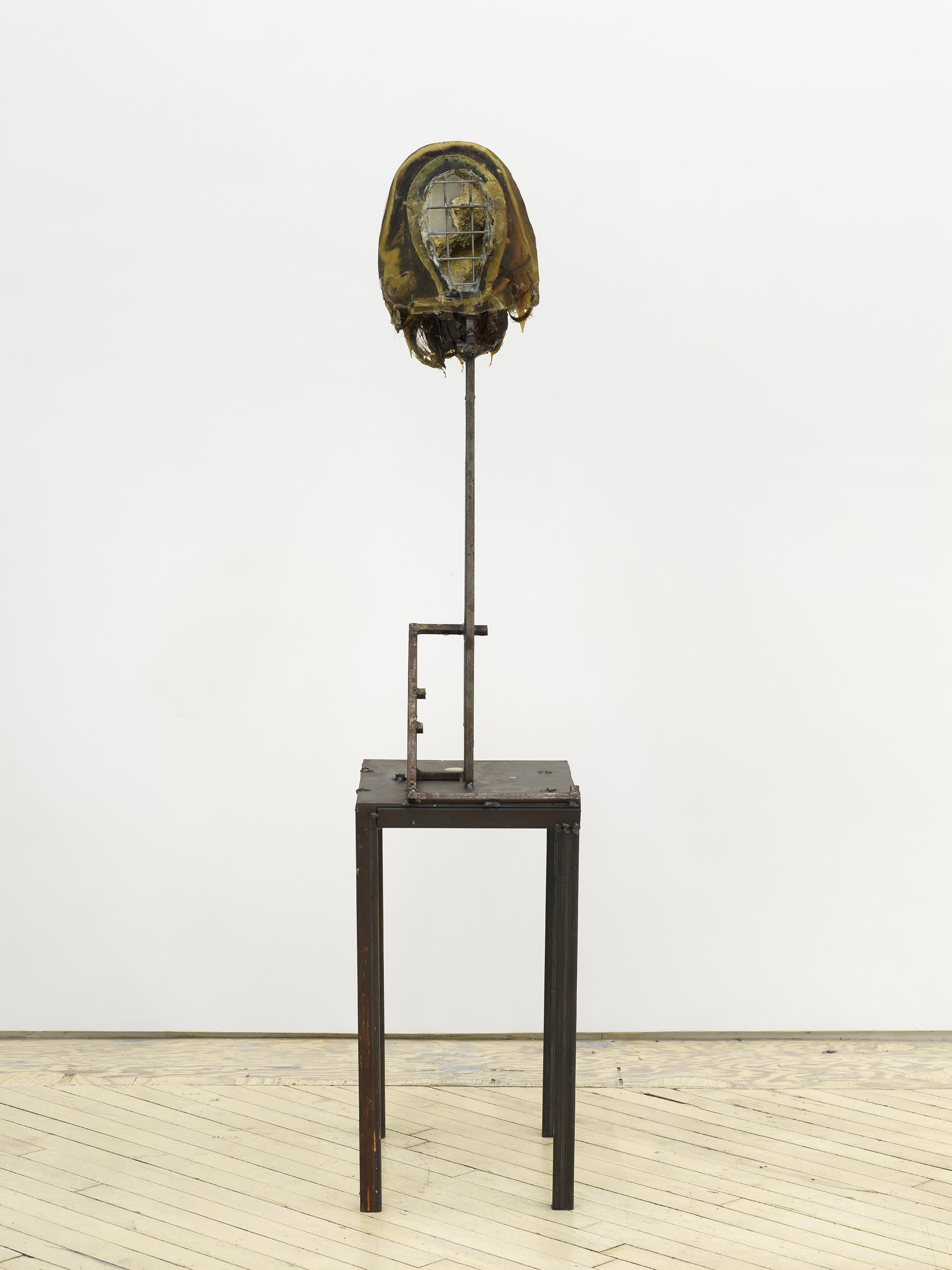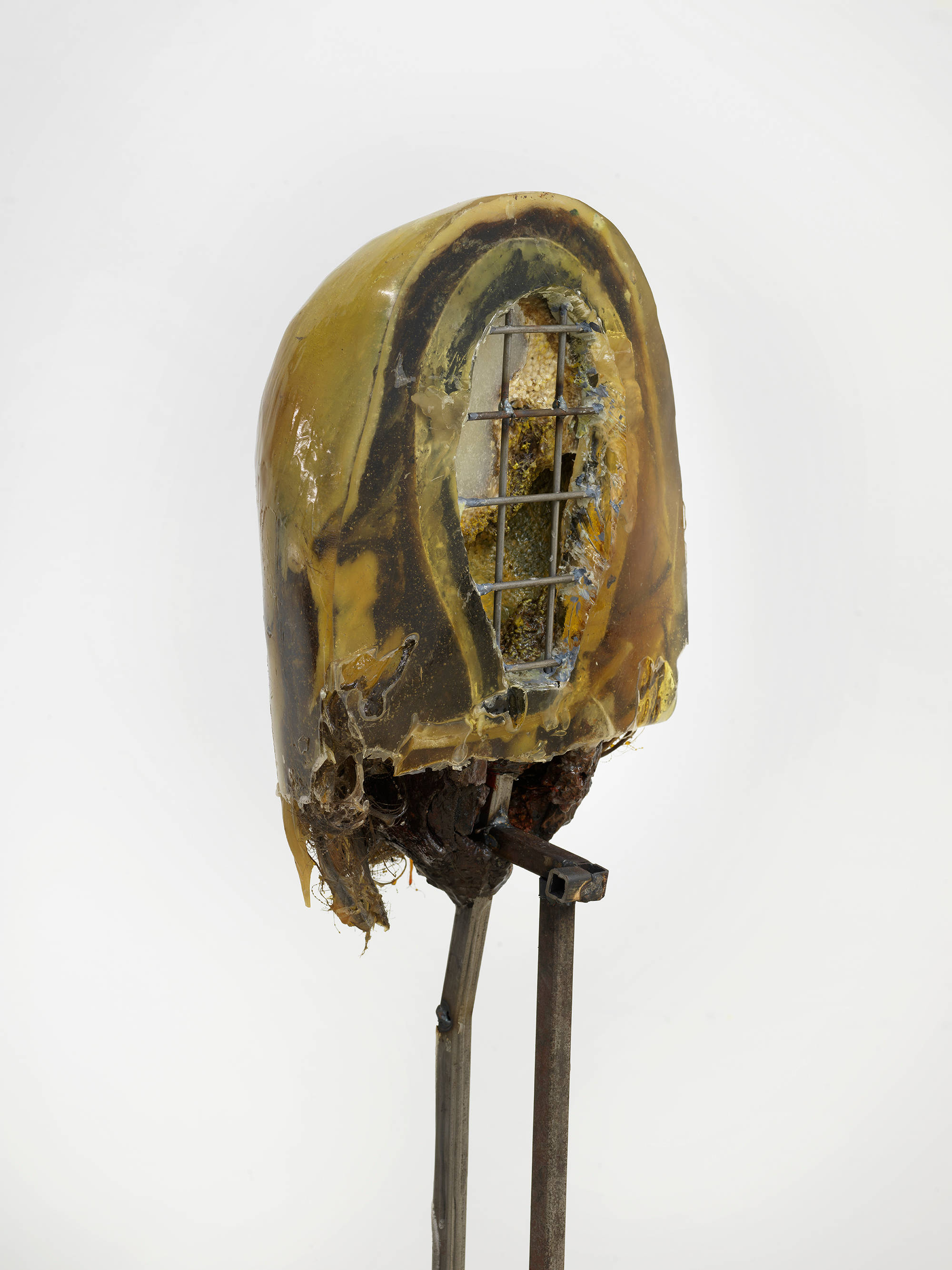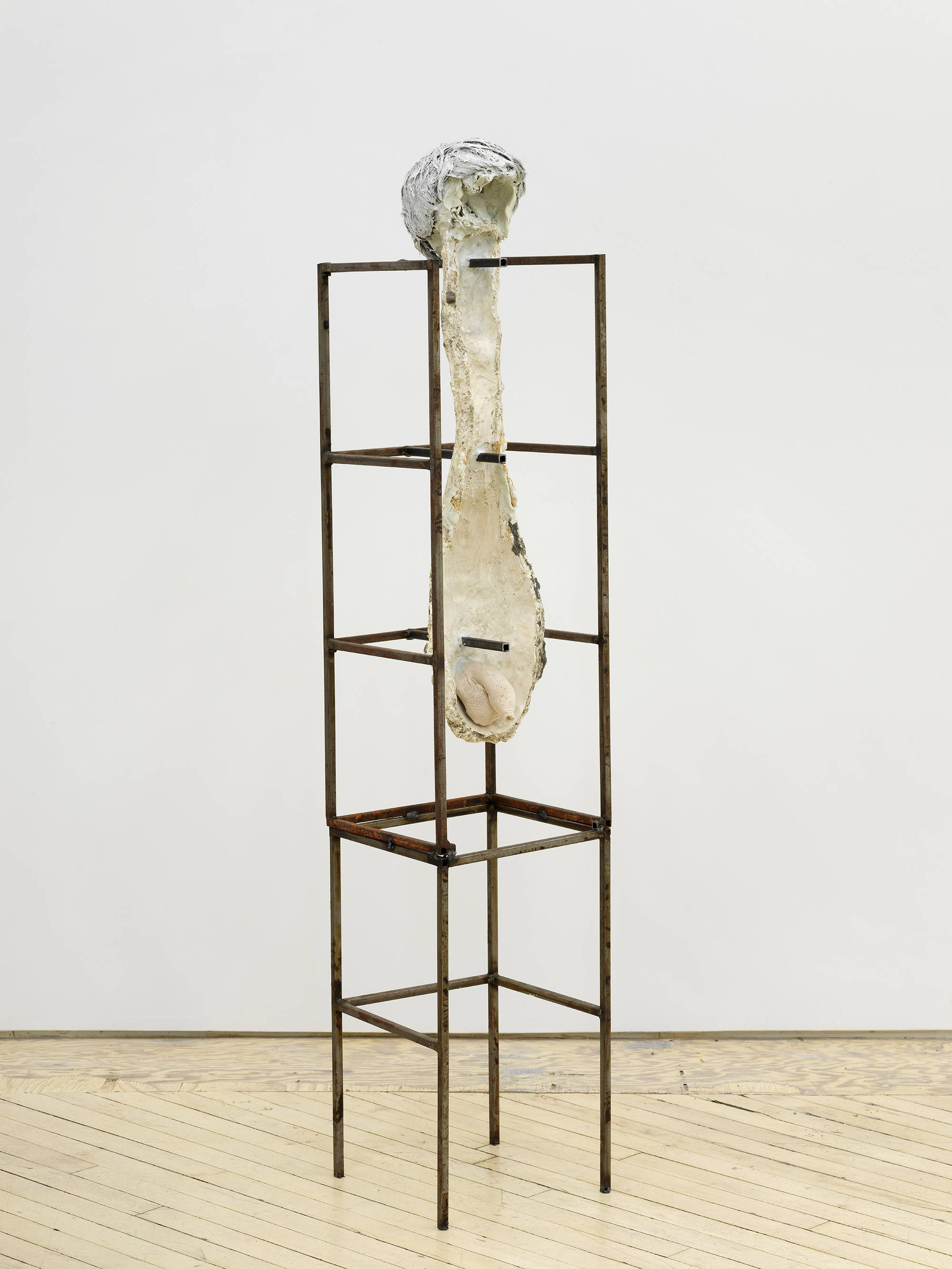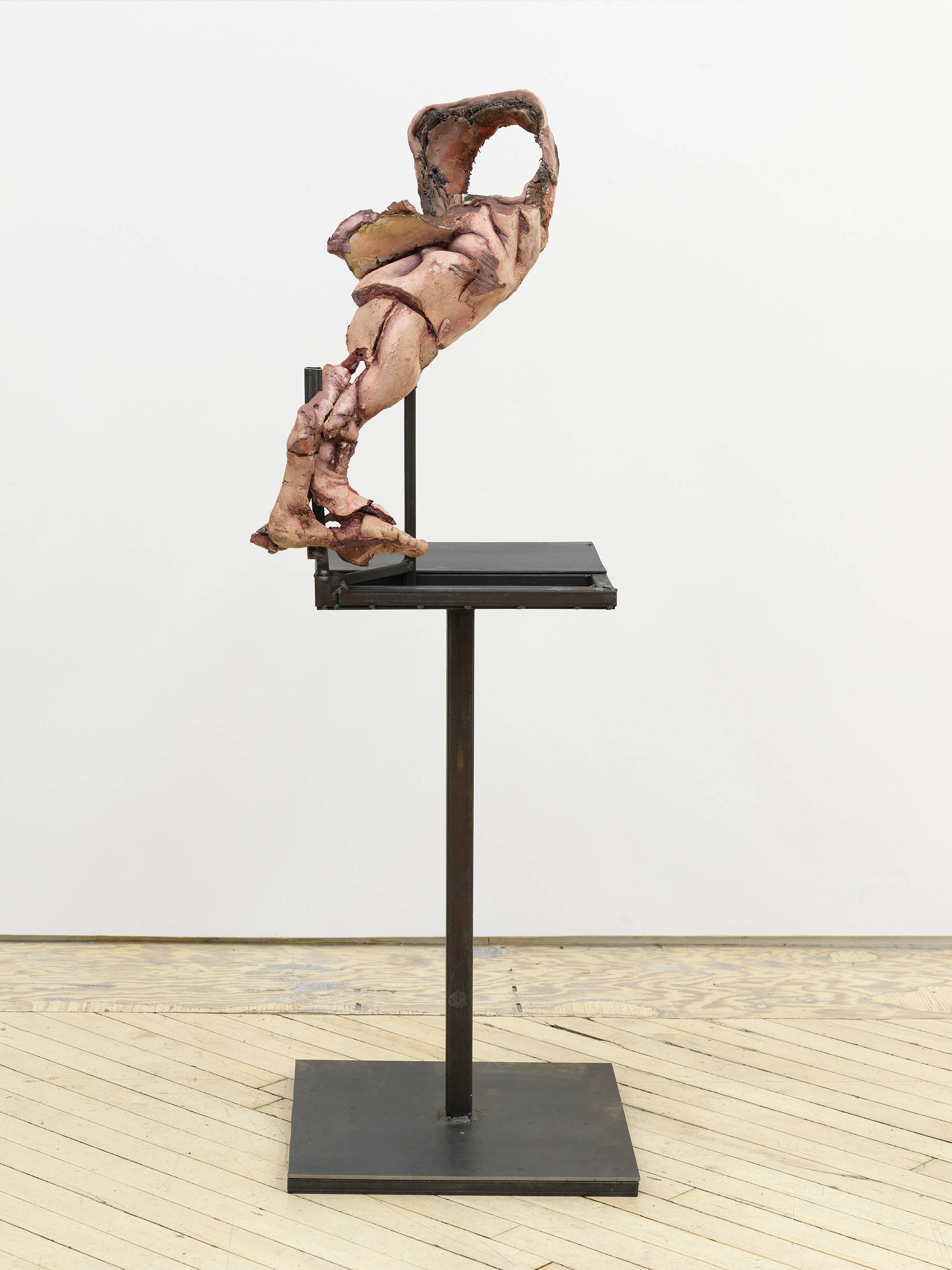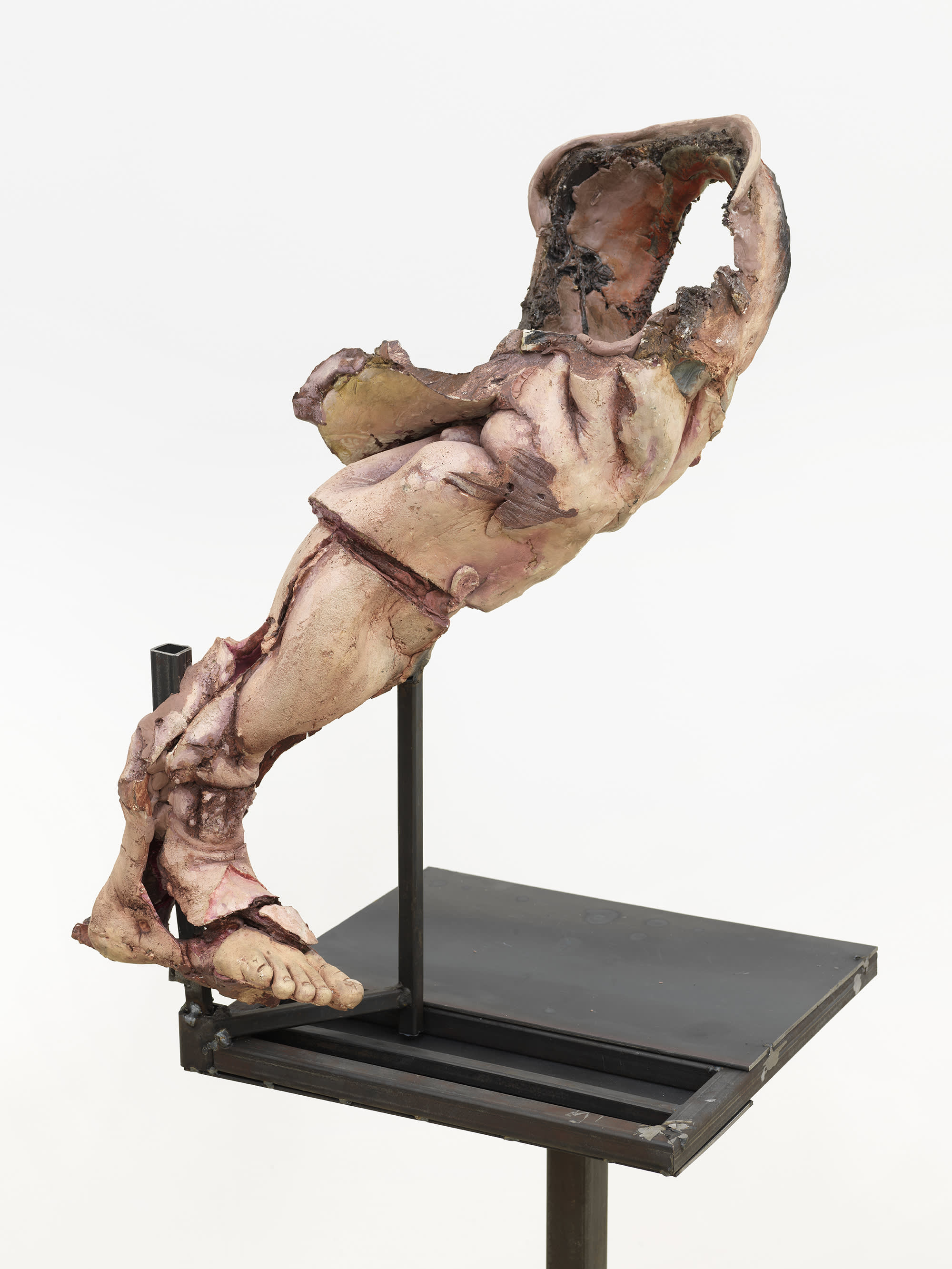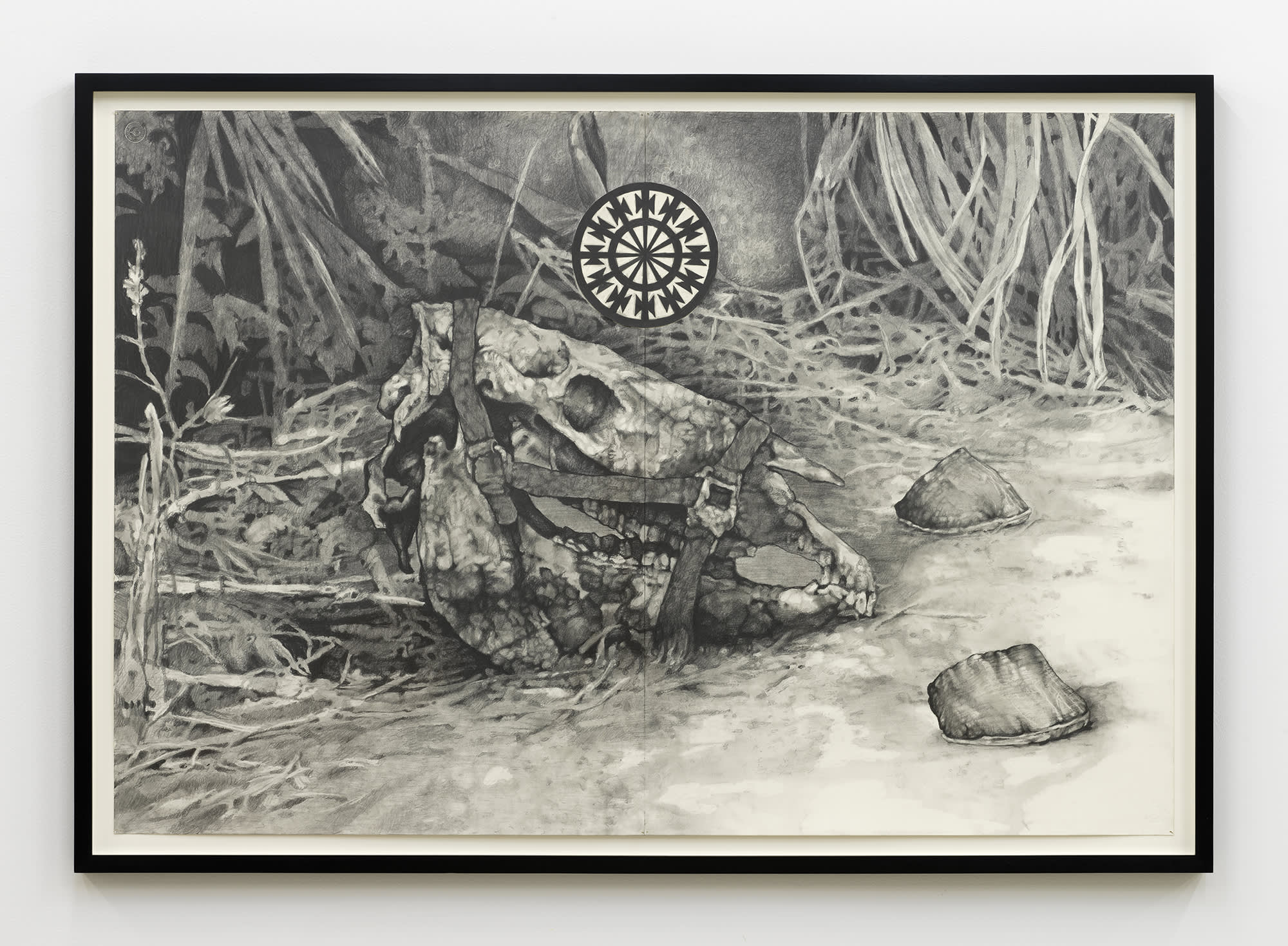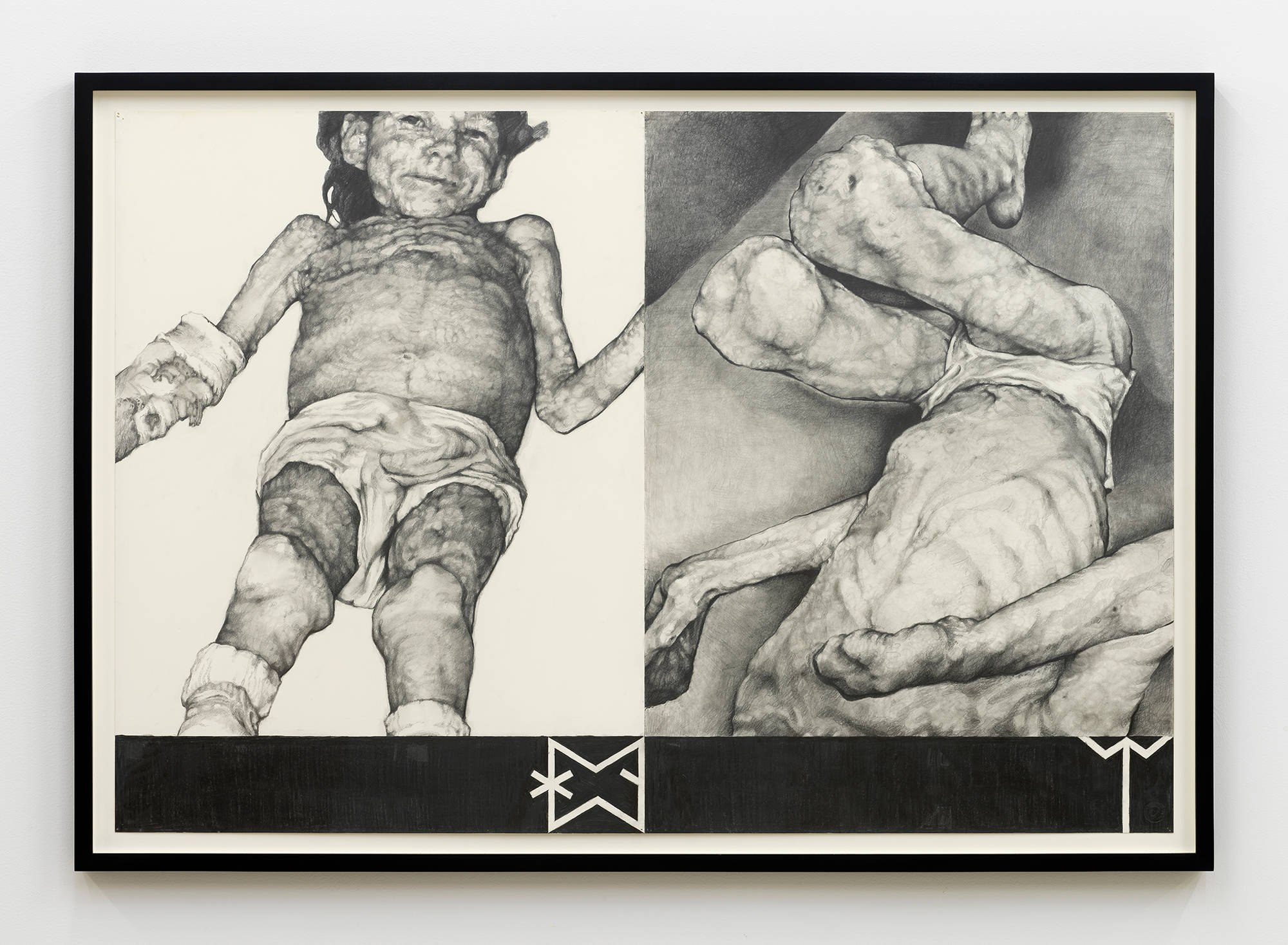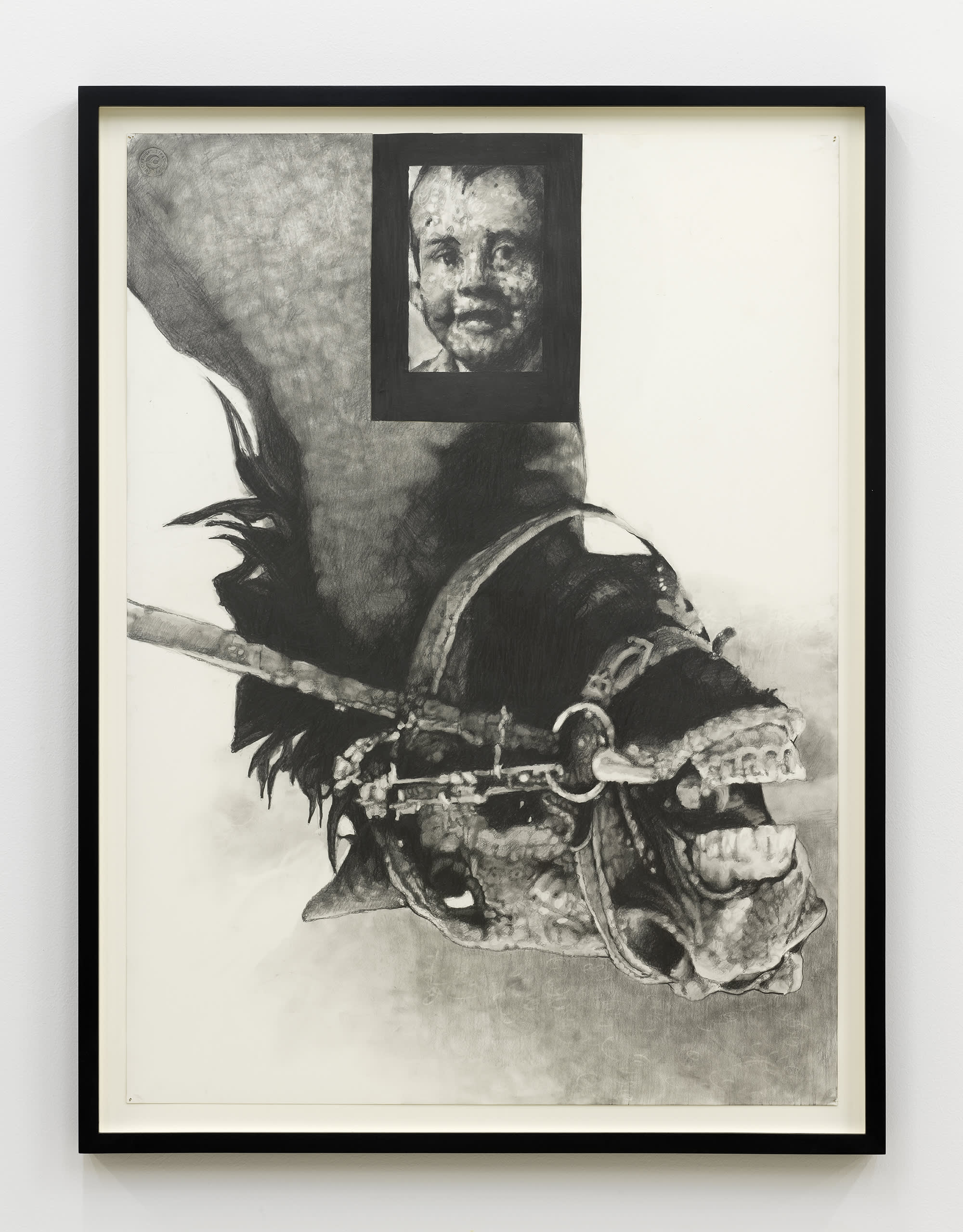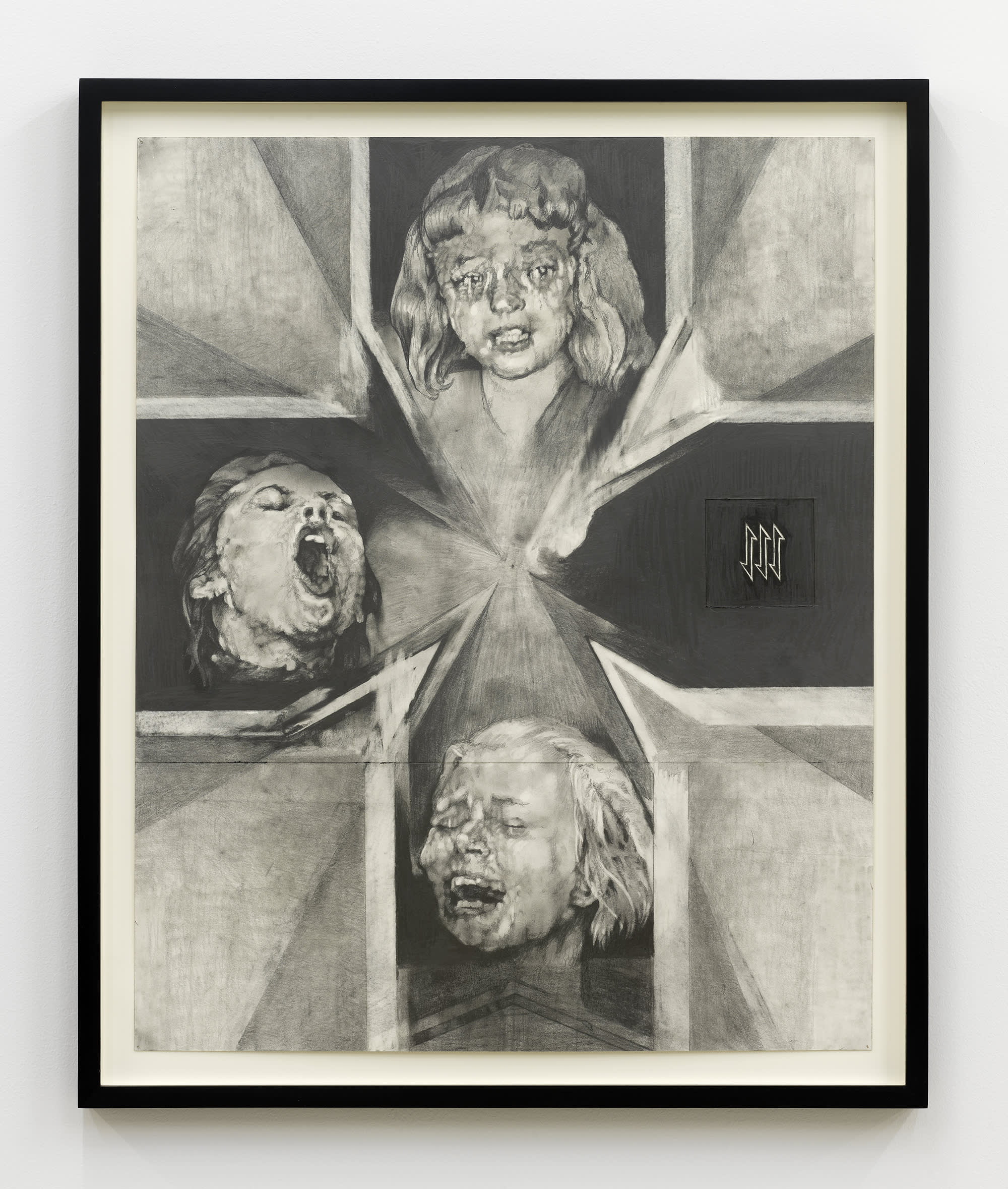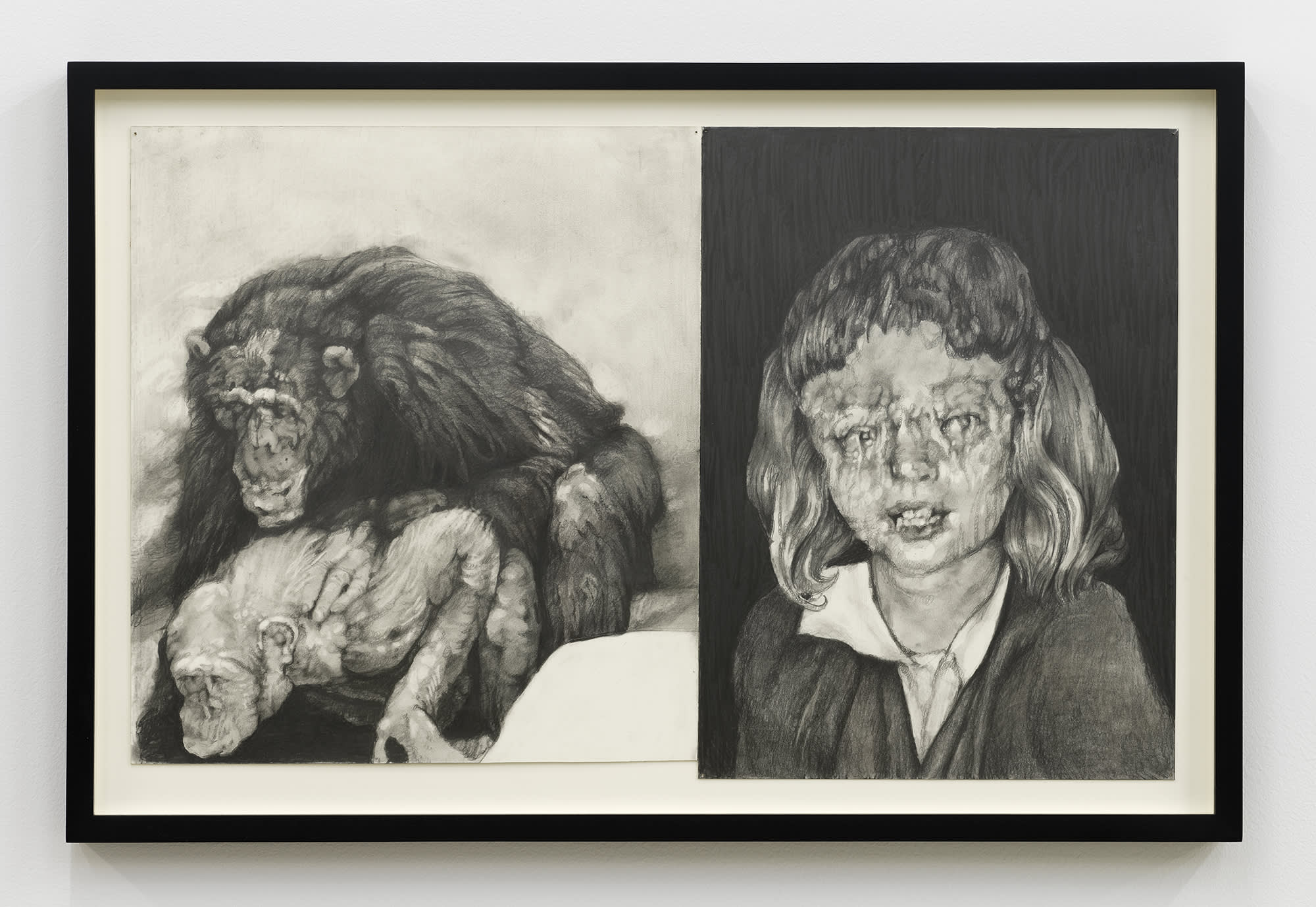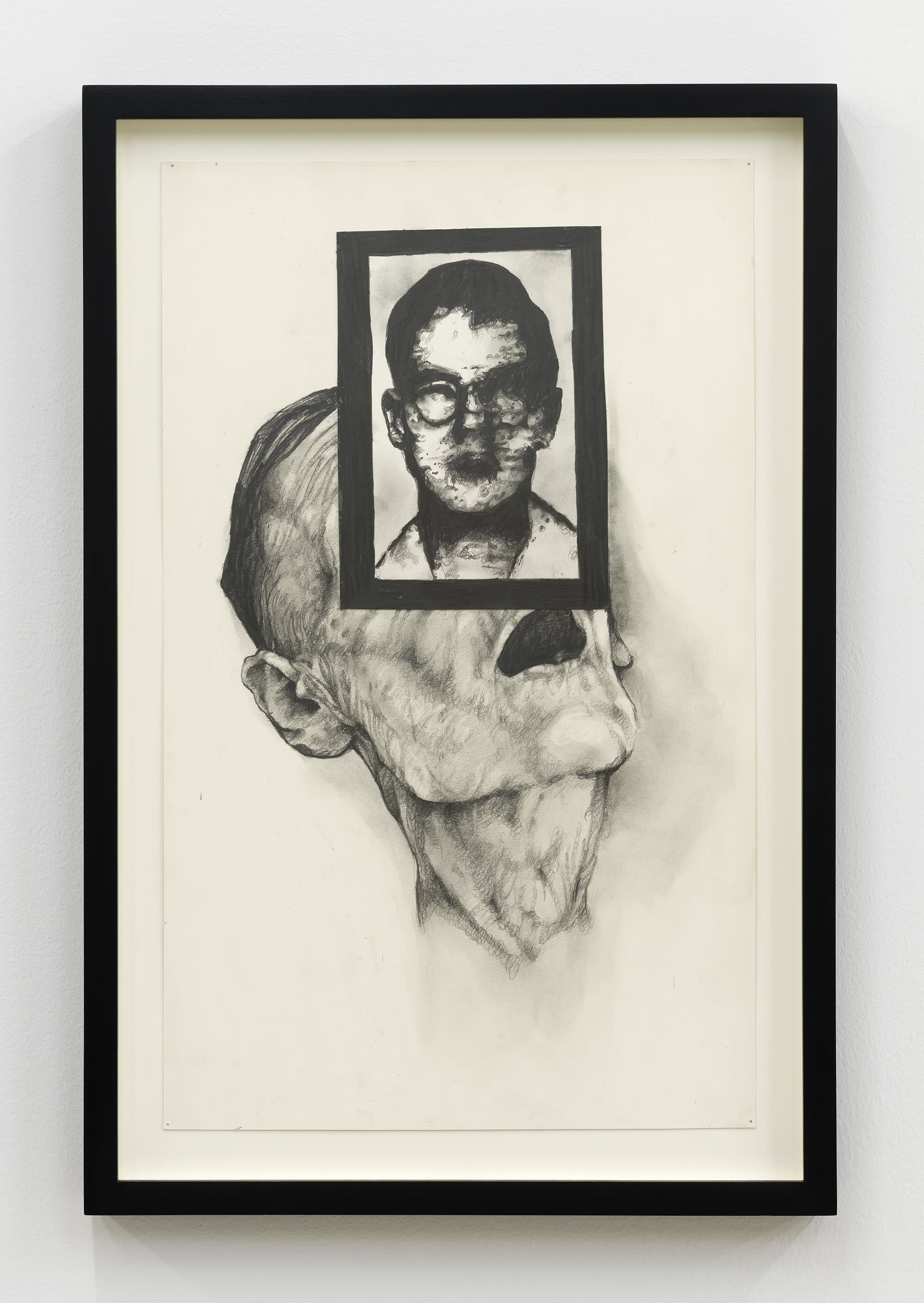Exhibition: Lionel Maunz Where the Body Ends
Lionel Maunz Where the Body Ends March 12 - April 16 2022
Bureau is pleased to present Where the Body Ends, Lionel Maunz’s sixth solo show at Bureau. The exhibition is maximal and refuses a conventional, spacious gallery installation. The space is installed in a claustrophobic manner replete with objects and bodies, some housed within steel and glass architectural structures of confinement. Maunz presents nearly twenty sculptural works and a large group of graphite drawings.
Maunz’s most recent sculptures are installed in the gallery’s front room and reveal an unraveling of narrative into a more impulsive, restless and immediate figuration. Undifferentiated body parts mutate and morph, hanging from cold metal display structures. Pink, bruised and bulbous, these body failures are visceral arrangements of flesh. Maunz writes: ‘...trying to get at the size of terror, need, demand and pain, as they collapse the world, entombed between the orifices, now a world of skin.’
In the main space there is a riot of work. Drawings fill the walls. A massive horse lies on a low steel base and an assembly of architectural altar and cage-like structures fill the rest of the gallery. These pieces contain veiled but menacing fragments on multi-tiered internal platforms confined inside wired glass and steel enclosures. Layers of flesh and the instruments that restrict it degrade and descend from one level to the next. As altars, these works summon a sense of devotion and mourning. As cages, the pieces naturally suggest the cruelty of confinement and captivity.
The large glass and steel enclosures comprise the artist’s most narratively specific body of work and delve into the depths of human cruelty, focusing on the abduction and abuse narratives of two young girls: Natascha Kampusch by Walter Priklopil and Sabine Dardenne by Marc Dutroux. The figures in these sculptures are finished in polychrome, a departure from the artist’s years-long focus on the muted palette of cast iron and concrete. This shift to a more colorful finish shows Maunz at his most unambiguous, yet lingering in a push and pull of sculptural description and architectural concealment. Here the metal and glass become an impediment for the viewer. This partial impenetrability of the interiors may distance the viewer from the subject: a subtle reprieve.
The focal point in the main gallery is the exhibition’s most imposing piece and Maunz’s largest and perhaps most technically accomplished to date. A life-sized, precisely sculpted and cast horse sculpture lies sprawled on its back, the animal in a spasm of suffering. As with Maunz’s previous work that explored the horse, there is a connection between the bulky, convulsive equine body with those of the child victims. Here the animal’s size and gestural upheaval are at odds with the stillness of the children. Maunz has always explored the horse through a lens of subjugation. Despite the formidable strength and size of the prey animal, it is ultimately ruled by fear.
In the drawings we see the artist deviate into parallel narratives. Maunz studies the utterly fallible body and connects interwoven scenes of cruelty, illness and memory. There is a screaming chaos in many of these works, as if we are inside the sculpture’s cages - within the space of pain and recollection. The horse again appears multiple times: inverted and wildly bearing its teeth and then as skeletal remains. Portraits of various boys – including one the artist himself and one of his father – are collaged alongside symbolic talismans and over a rearing horse. The artist’s father appears again in these drawings at the end of his life. A triptych of portraits of Maunz’s father on his deathbed is entombed within an imposing steel sculpture. The scale and pathos of the work is impressive and raw. In the artist words, he aims ‘at expanding on my compulsion towards cruelly lensed flesh, wracked by fear, power, sex and catastrophe.’
Lionel Maunz (b. 1976, lives and works in New York, NY) received his BFA and MFA from Southern Methodist University in Dallas, TX. Solo exhibitions include In the Sewer of Your Body, Bureau, New York, NY, 2018; Discovery of Honey / Work of the Family, The Contemporary Austin, Austin, TX, 2017; Fealty, Bureau, New York, NY, 2016; Lionel Maunz, MoMA PS1, New York, NY, 2016; Deluge, Bureau, New York, NY, 2014; Receipt of Malice, Bureau, New York, NY, 2012; Wail Eternal Scorn of Geologic, Bureau, New York, NY, 2011. Maunz’s work is in the permanent collection of the Whitney Museum of American Art, New York, NY; Museum of Modern Art, New York, NY; and the Blanton Museum of Art, Austin, TX.
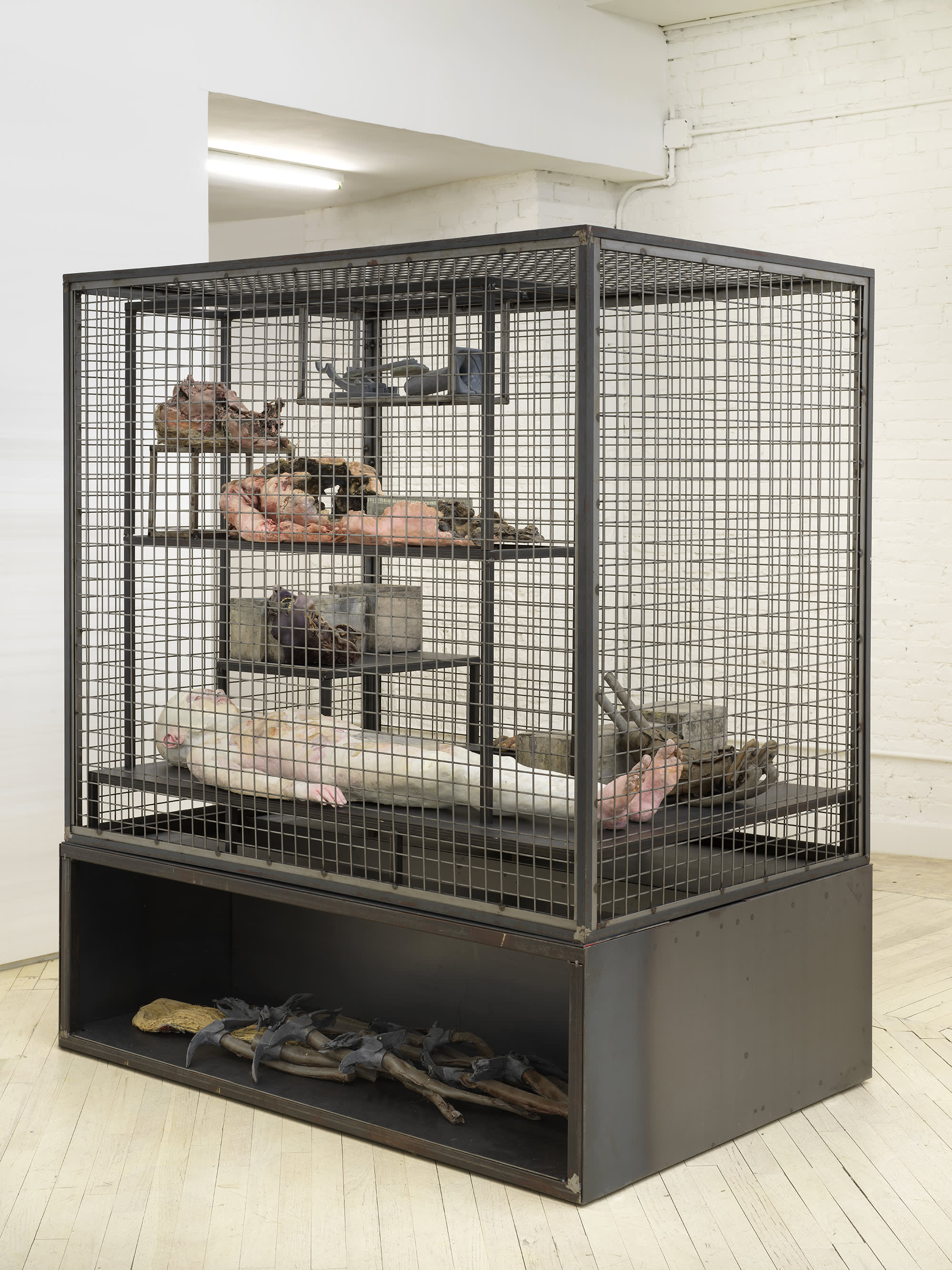
Catechism, 2021, Steel, polymer modified gypsum, polyurethane resin, epoxy resin, epoxy clay, wig, concrete, acrylic, acrylic paint, 68 × 39 × 57 ¼ in.
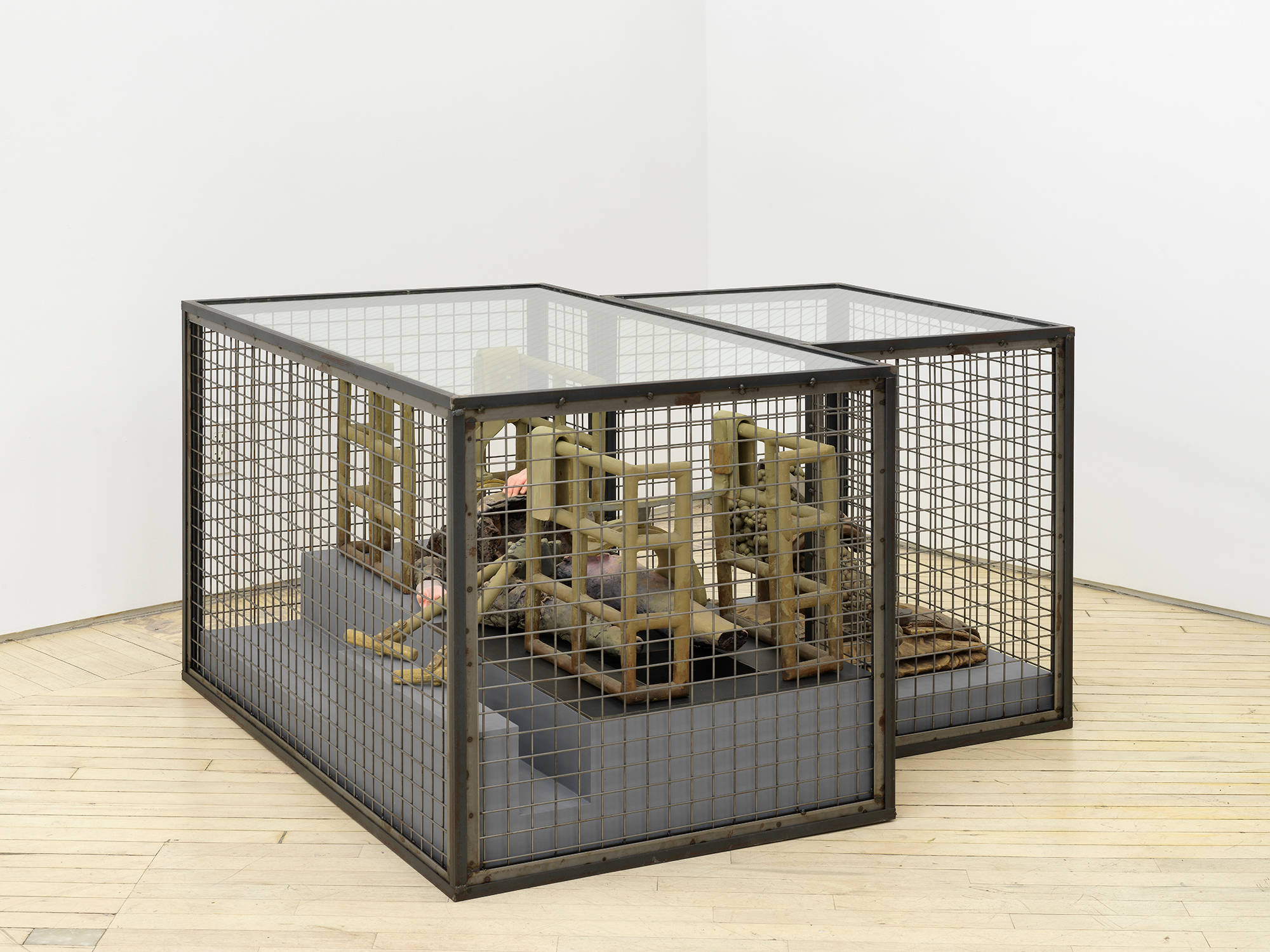
Calvary, 2021, Steel, glass, polymer modified gypsum, polyurethane resin, epoxy clay, wood, acrylic paint, 30 ¼ × 52 × 50 in.

You'll Learn It On Your Body, 2021, Steel, glass, polymer modified gypsum, polyurethane resin, epoxy clay, plaster, burlap, acrylic paint, 56 ¼ × 42 × 24 in.

Your Property, 2021, Steel, glass, polymer modified gypsum, epoxy clay, plaster, hair, burlap, acrylic paint, 56 ¼ × 16 ¼ × 16 ¼ in.
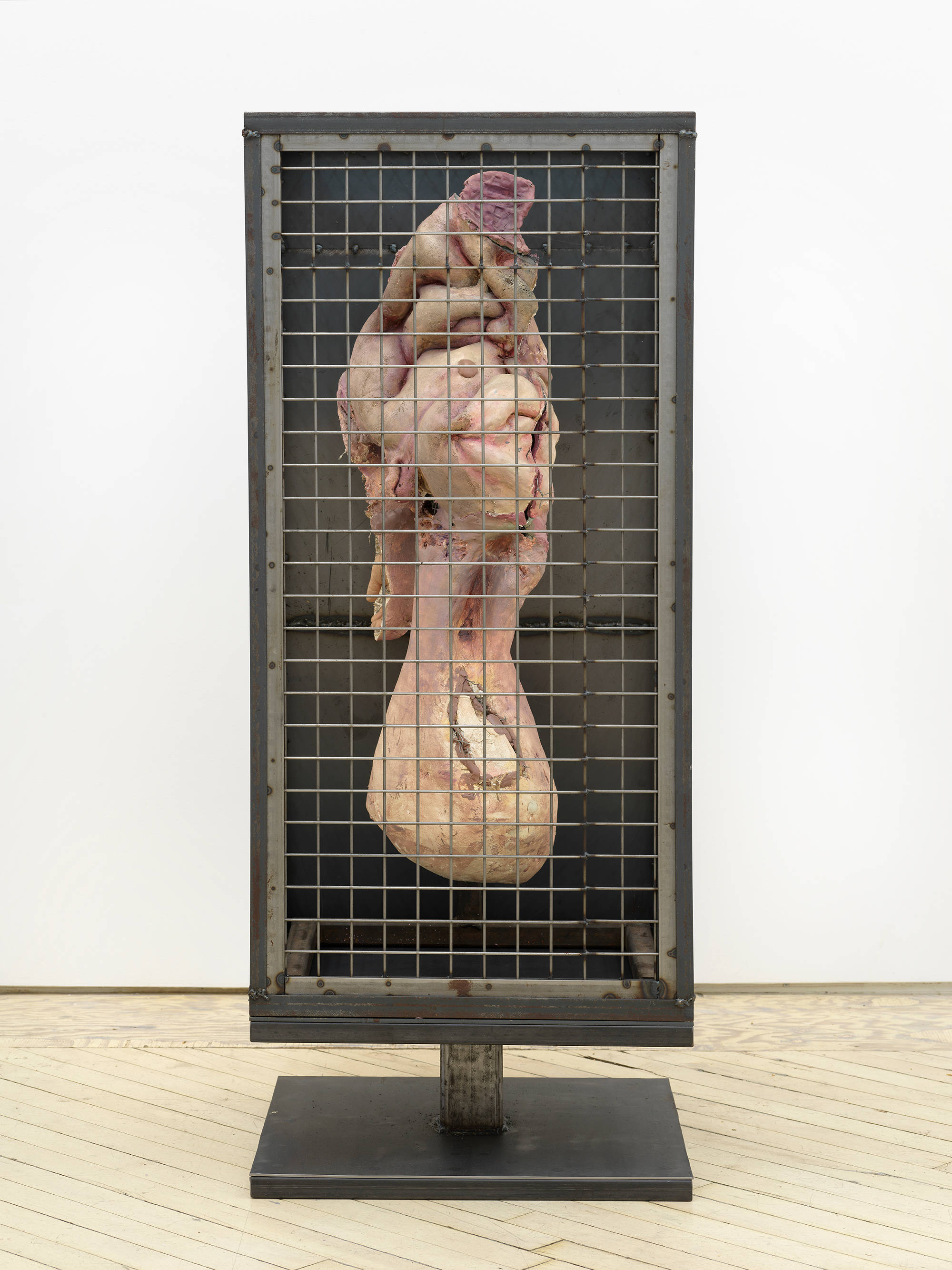
Child of God, 2021, Steel, polymer modified gypsum, plaster, polyurethane resin, epoxy clay, burlap, acrylic paint, 50 × 20 ¼ × 18 in.
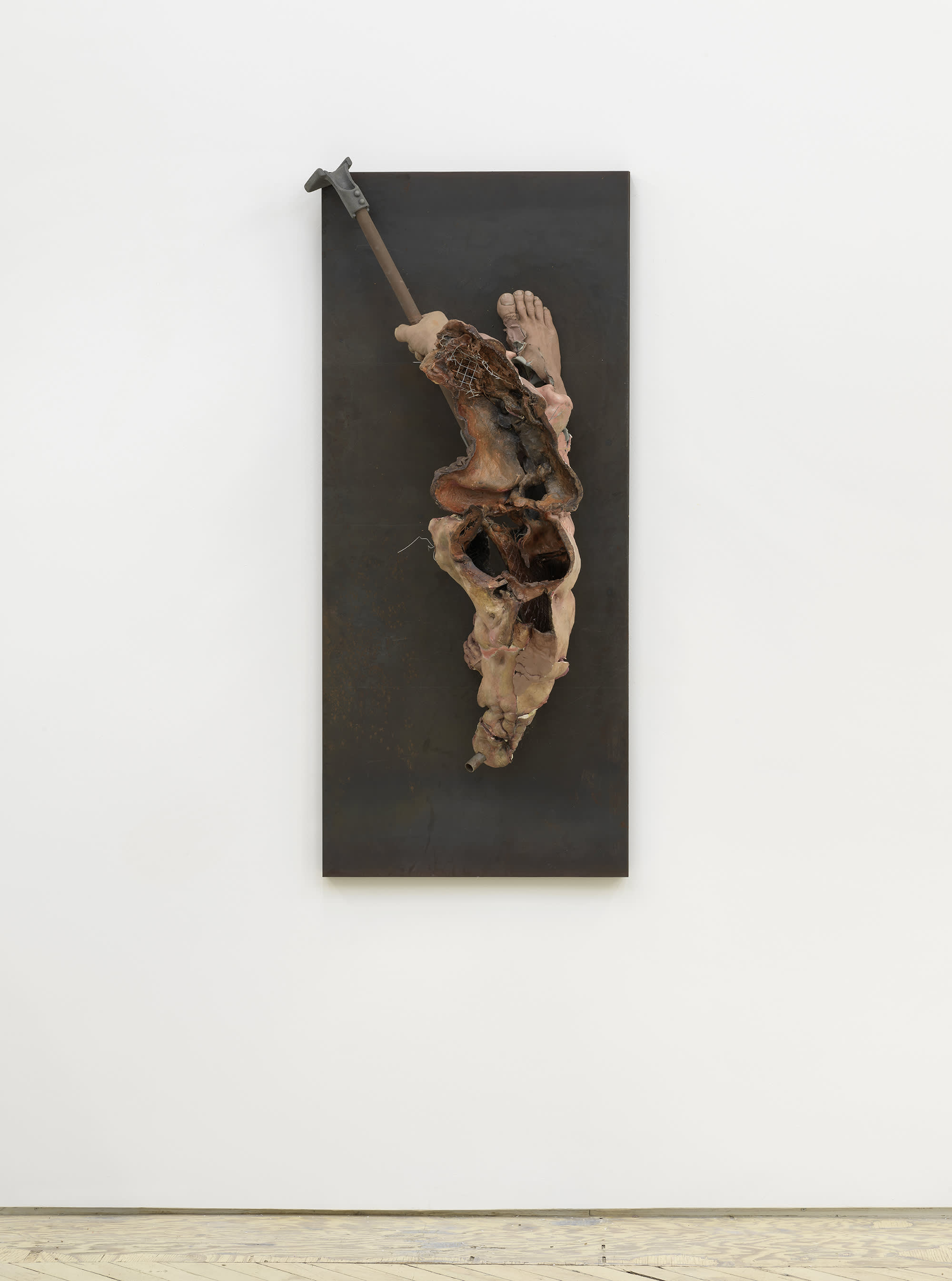
Slug / I Only Use the Word to Denote the Mind's Frailties, 2021, Polymer modified gypsum, polyurethane resin, epoxy clay, steel, acrylic paint, 50 × 22 × 13 ¼ in.
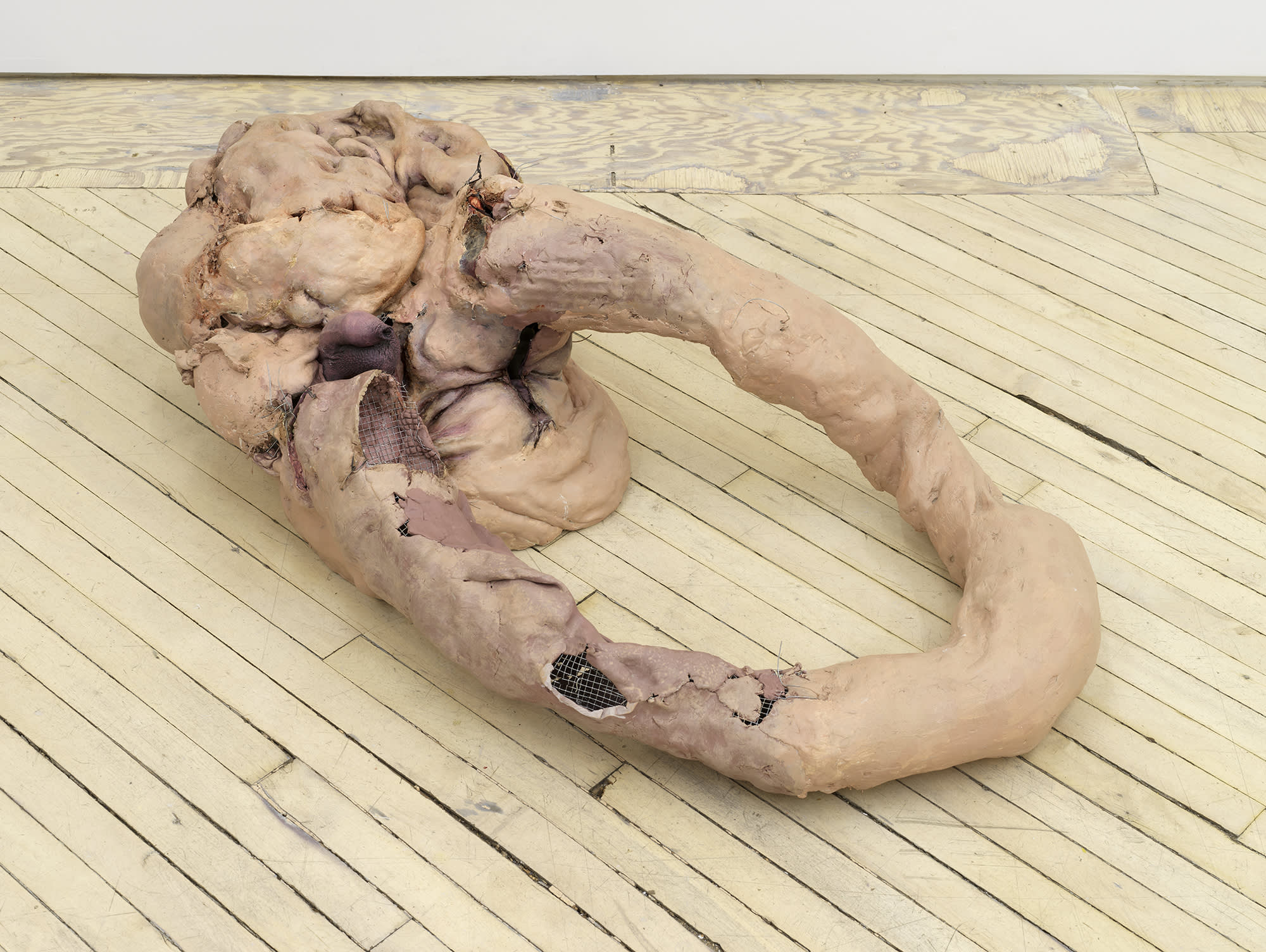
Descension / Extermination, 2021, Polymer modified gypsum, plaster, epoxy clay, polyurethane resin, burlap, steel, acrylic paint, 47 × 25 ½ × 14 ½ in.
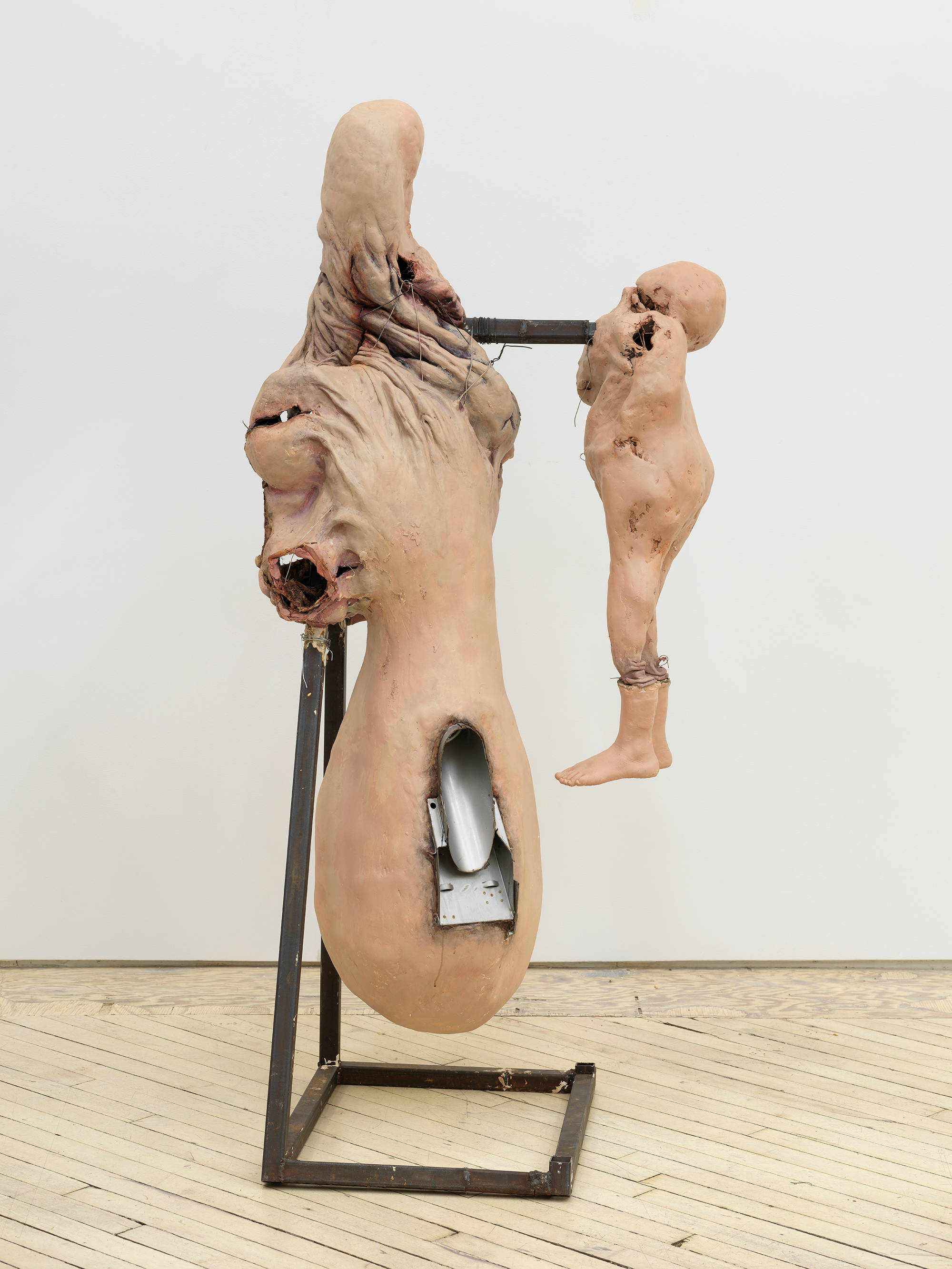
Everything Independently Screaming, 2021, Polymer modified gypsum, plaster, epoxy clay, polyurethane resin, burlap, steel, acrylic paint, 64 × 29 × 27 in.
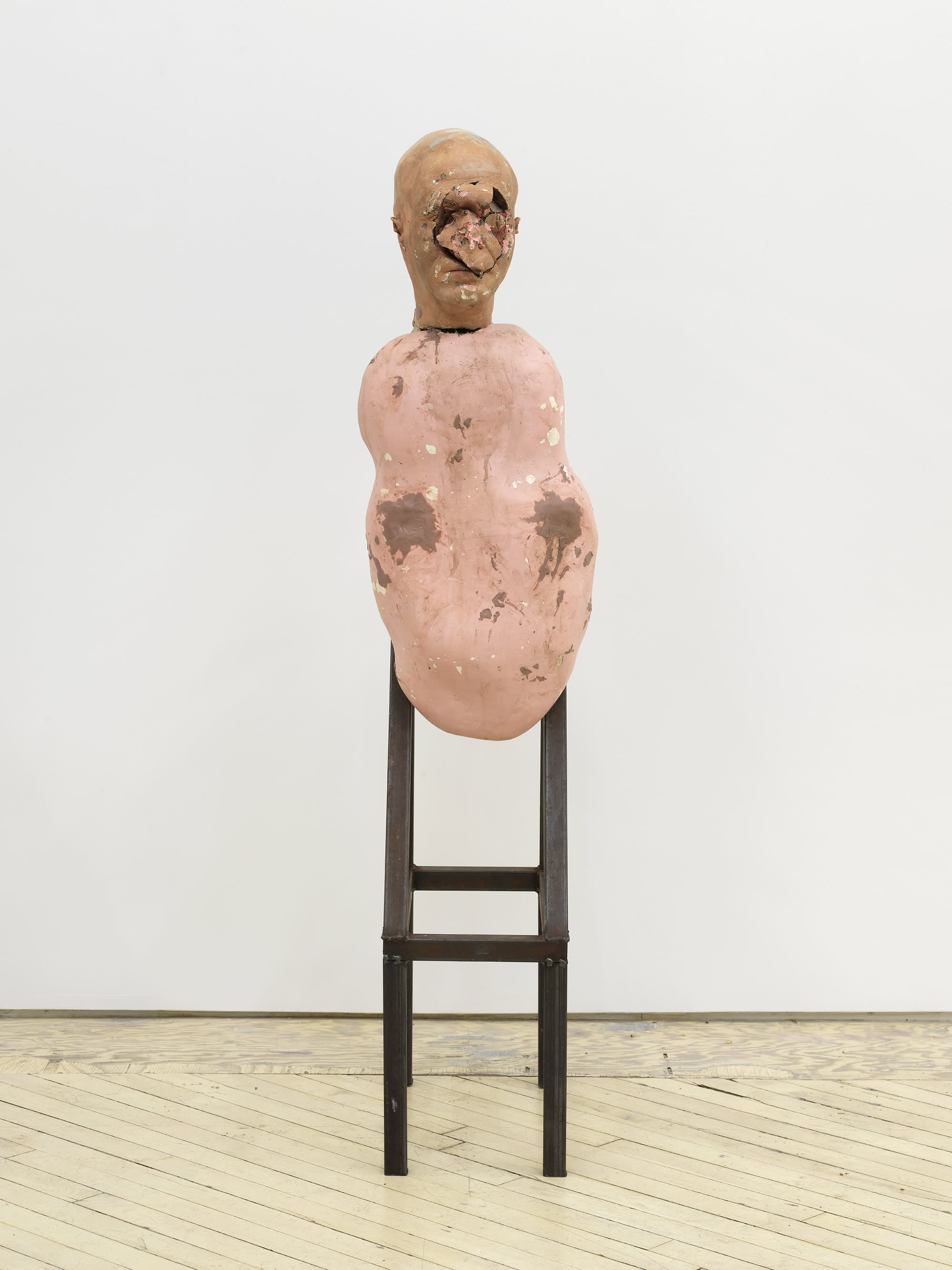
Not Me / Not Here / Not Now, 2021, Polyurethane resin, polymer modified gypsum, epoxy clay, plaster, burlap, steel, acrylic paint, 57 × 13 × 18 in.
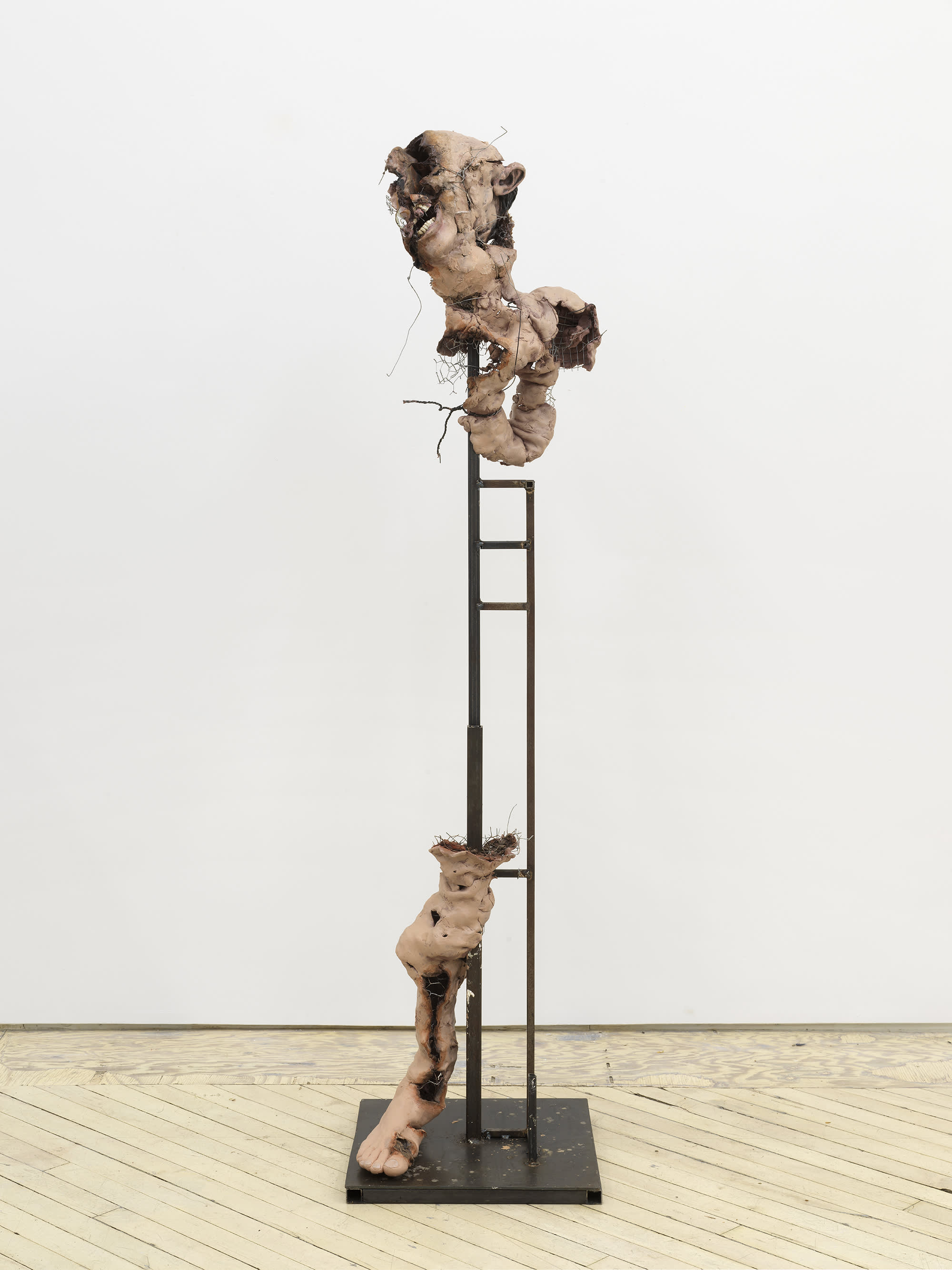
As Your Flesh Crumbles, 2022, Polyurethane resin, epoxy clay, plaster, burlap, steel, acrylic paint, 68 × 16 × 16 in.
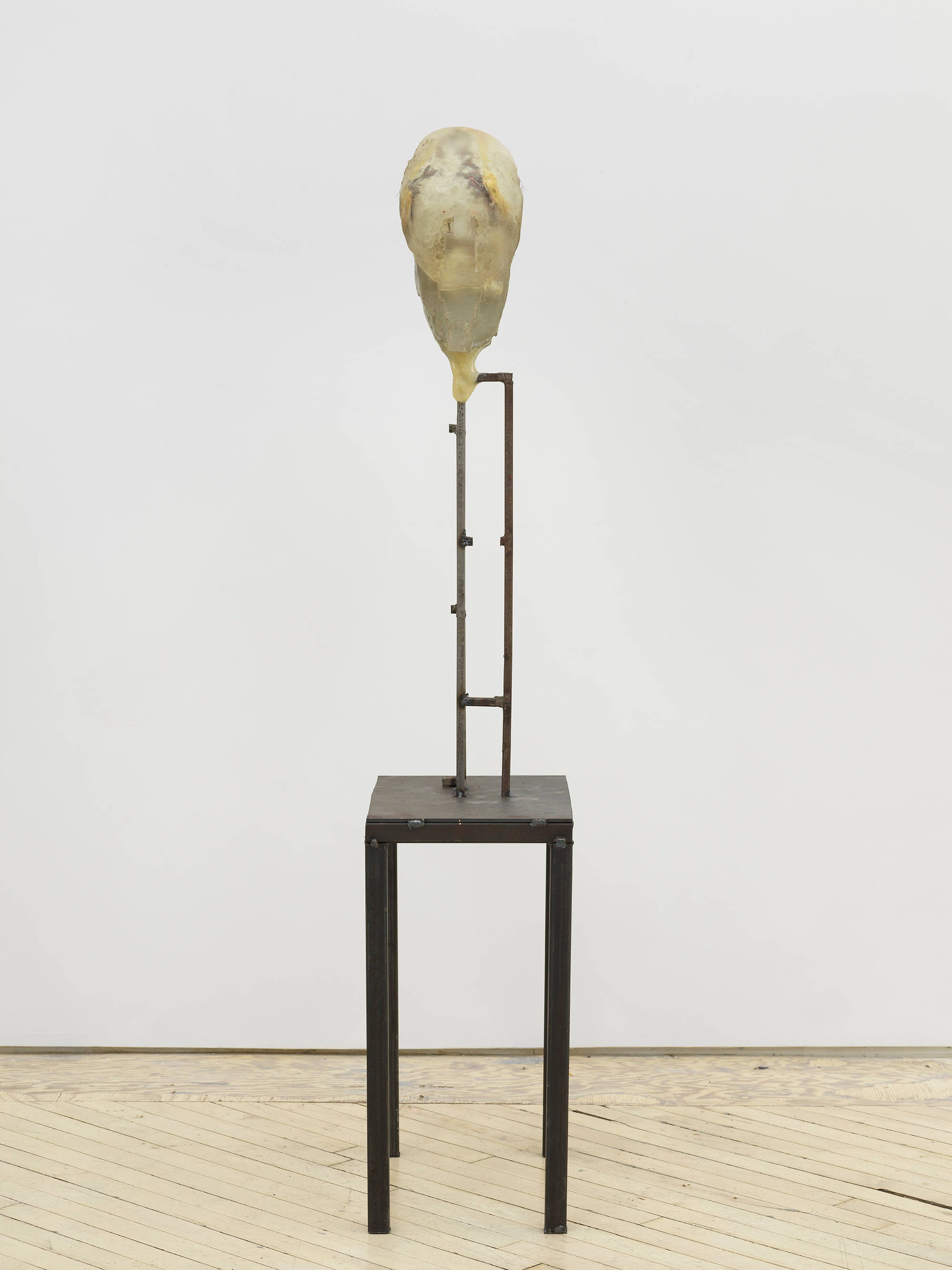
Field of Death, 2021, Polyurethane resin, epoxy resin, epoxy clay, wig, steel, acrylic paint, 64 ½ × 17 × 12 in.
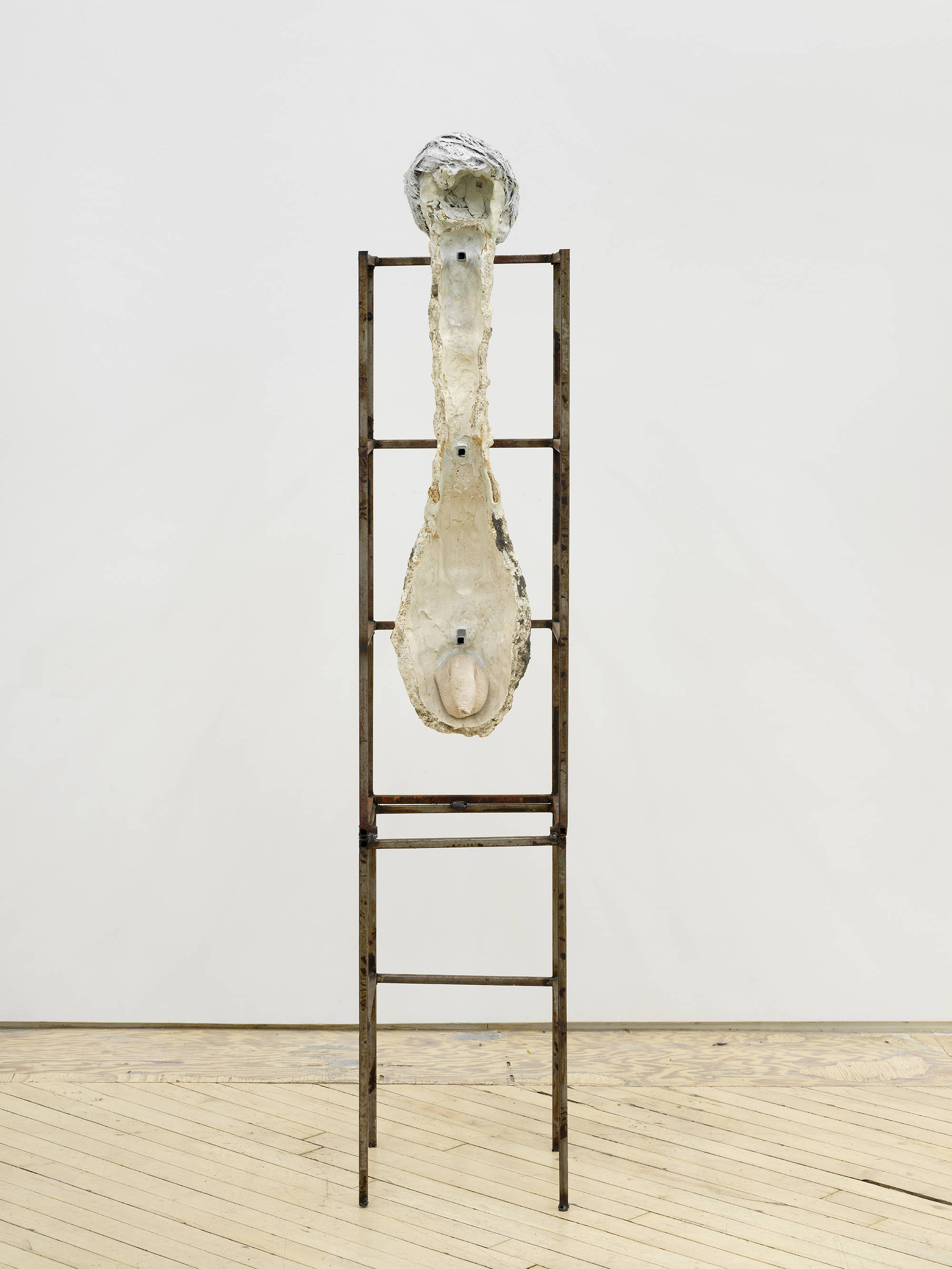
Total Depravity, 2021, Plaster, epoxy clay, polymer modified gypsum, burlap, wig, steel, acrylic paint, 61 ¾ × 12 × 12 in.
